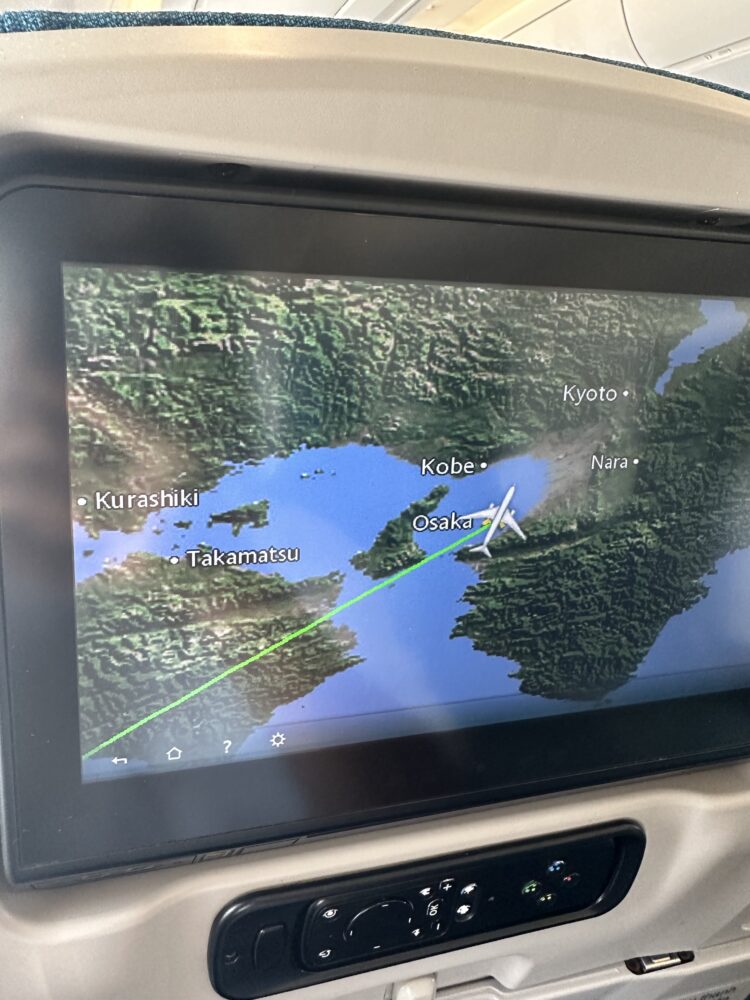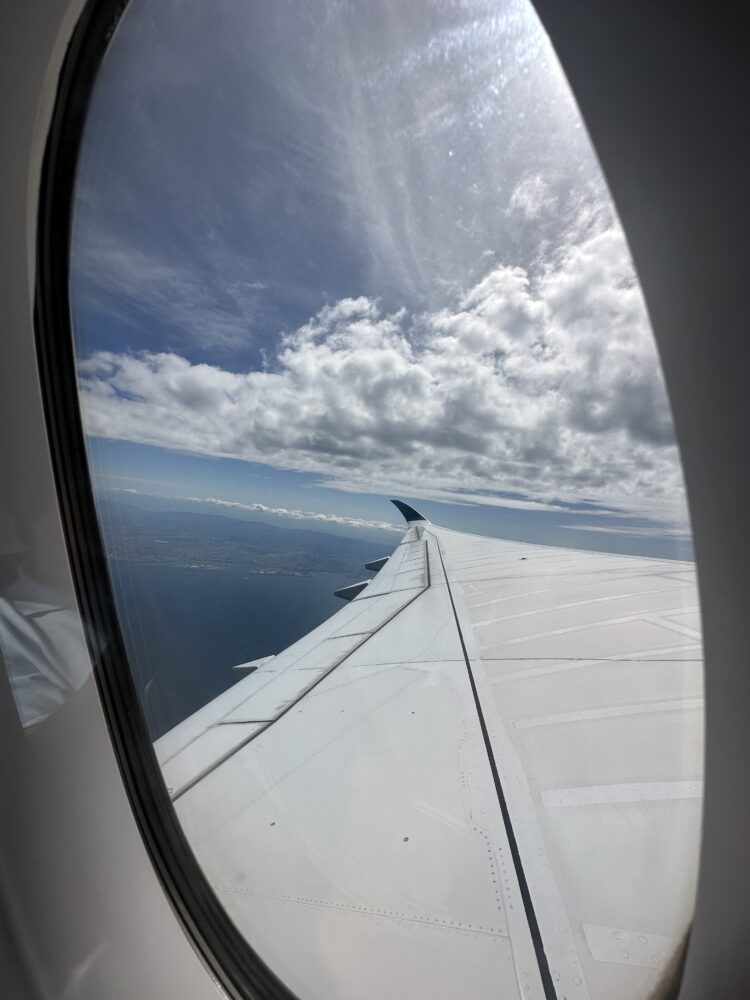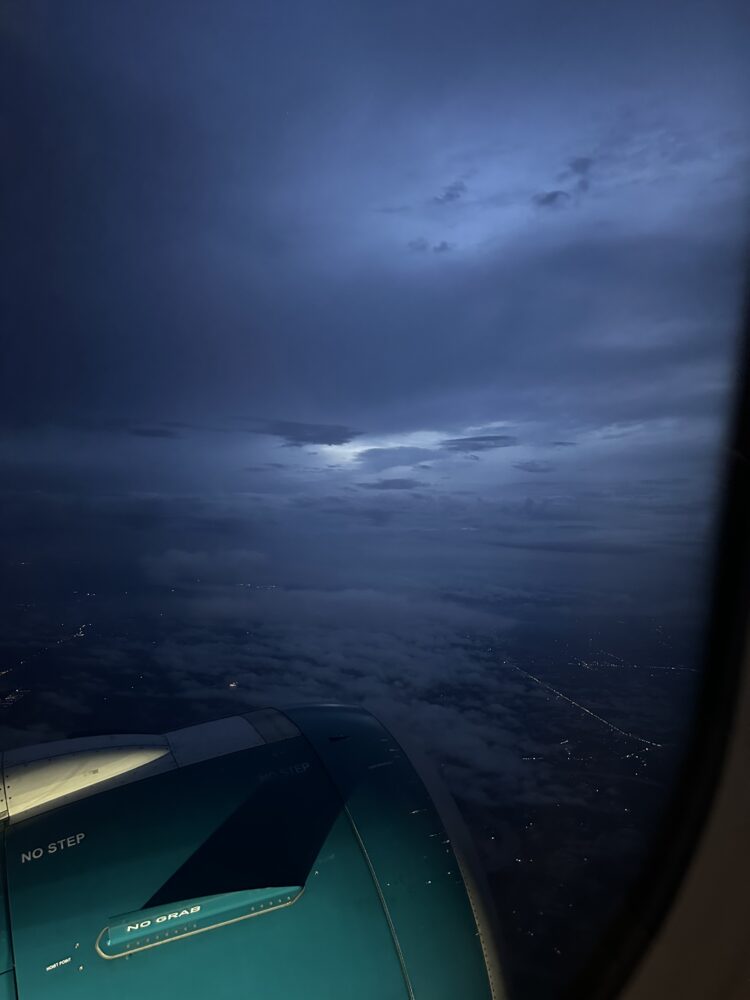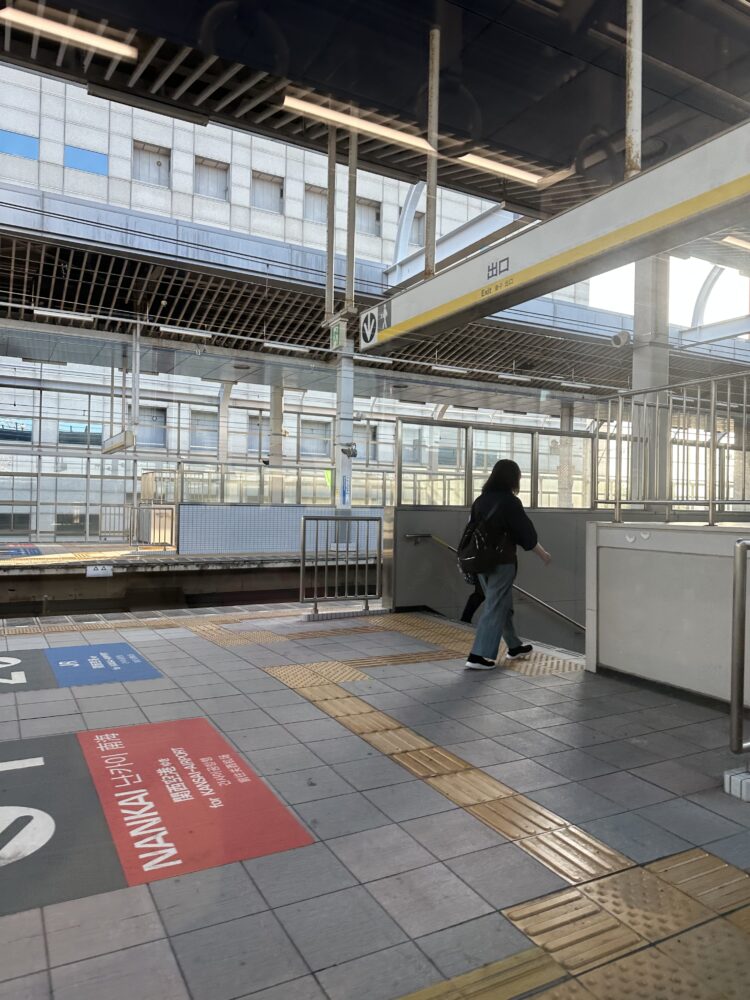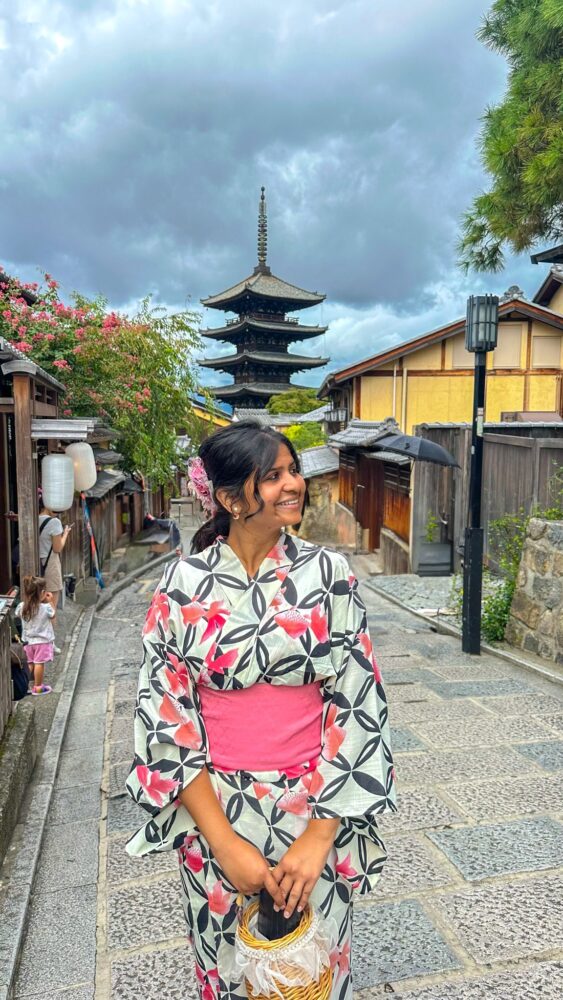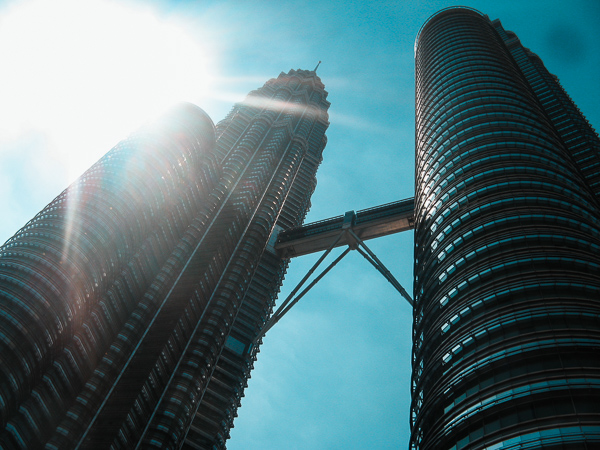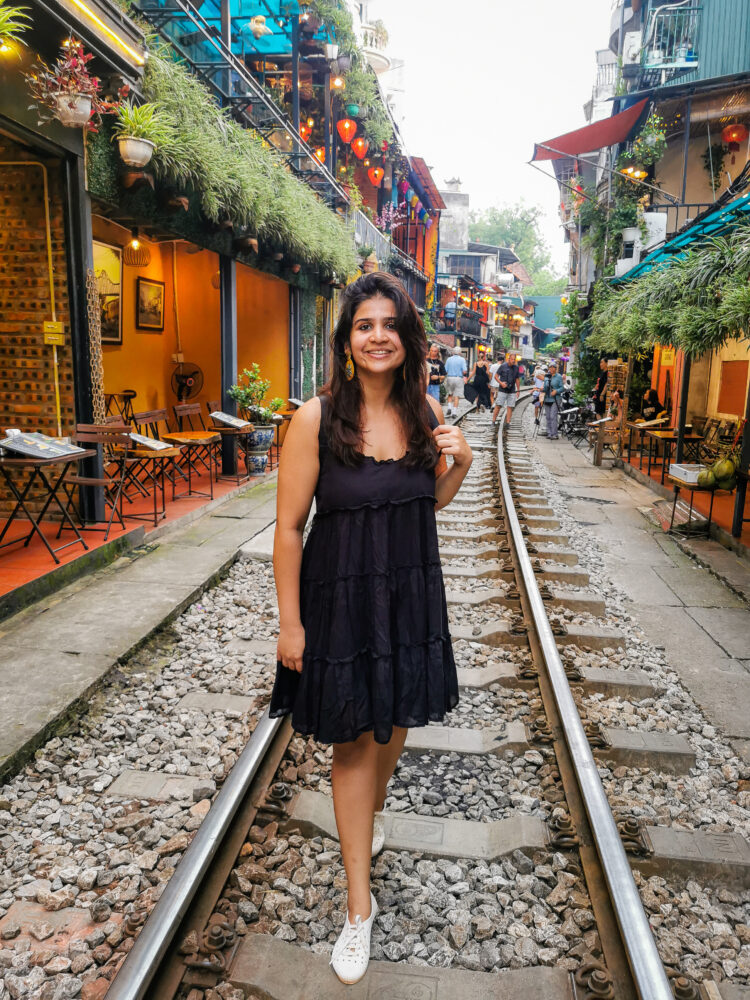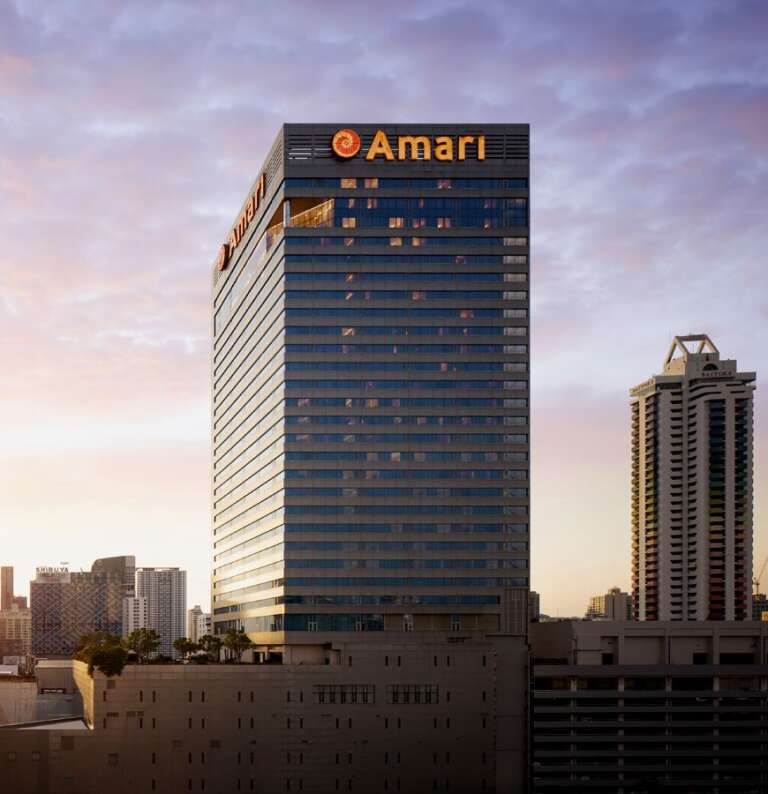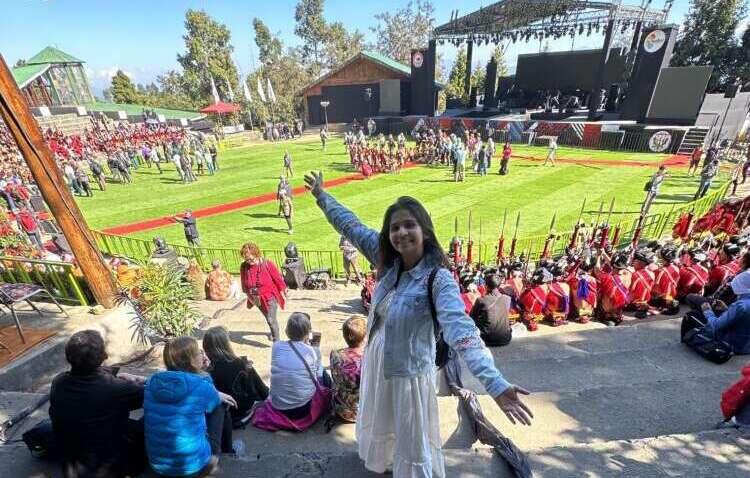Japan 14 Days Itinerary
Introduction
Welcome to the captivating land of Japan! As you embark on this journey and take your first breaths of the country’s diverse air, you’ll immediately sense the enchantment and warmth of this remarkable destination. When it comes to reaching Japan, the most common way for travelers from India is by air. Major airlines, such as Japan Airlines, Air India, and budget-friendly carriers like AirAsia, Vistara and IndiGo, offer regular flights connecting various Indian cities to Japan. Key international airports in India with direct flights to Japan include Delhi, Mumbai, Kolkata, and Bengaluru.
Upon arrival in Japan, you’ll typically land at one of the country’s major airports, such as Narita International Airport in Tokyo, Kansai International Airport in Osaka, or Chubu Centrair International Airport in Nagoya. From there, you’ll have a range of transportation options to reach your destination, whether it’s in the bustling city centers or serene countryside. Japan’s efficient public transportation system, including trains, buses, and taxis, will ensure a convenient and comfortable journey to your accommodation.
So, get ready to immerse yourself in the rich culture, stunning landscapes, and diverse experiences that await you on your 14-day adventure in Japan!
Japan is the only country which is unique in its own way where everyone would like to visit once in their lifetime. It’s present is deeply rooted with past traditions and cultures along with a futuristic approach with an ultimate technologies making it an advanced country.The history and culture is preserved by the Japanese people and they show immense respect and politeness to their nationality. A holiday in Japan means getting confused and shocked at the same time, as it has various things to explore. It can be said that Japan is multi- layered of cultures to be unwrapped. So, it needs to be done one by one as each layer contains a lot of knowledge and amusement to gaze in to the heart.
This two-week itinerary for Japan offers a comprehensive round-trip starting from the captivating and somewhat bewildering capital, guiding you through the charming castle towns in the northern regions, leading you to the vibrant cities of Osaka, Kyoto, and Hiroshima in the south. The journey can be concluded with a tranquil escape in the hot spring town of Beppu. Along the way, you’ll traverse the entire length of Japan’s primary island, Honshu, and explore the onsen paradise of Kyushu. You’ll have the opportunity to engage with skilled artisans, meander through picturesque rice paddies, admire mountain temples, indulge in local delicacies such as okonomiyaki, and so much more.
Day 1: Toyko
Flying from your home country to land in this beauty for an adventurous 14 days of your life. Take a rest after this long flight which landed at Haneda airport that is approximately around 20 minutes to the main city of Tokyo. Although there is another airport which 1 hour away named Narita, the travel accessibility is amazing and to rely for. So, day 1 is all about resting and walking tour of this beautiful vibrant city and the actual trip starts from the 2nd day of the trip. Yet we do have an interesting places to roam from one of your bucket list on day 1.
Shinjuku night market
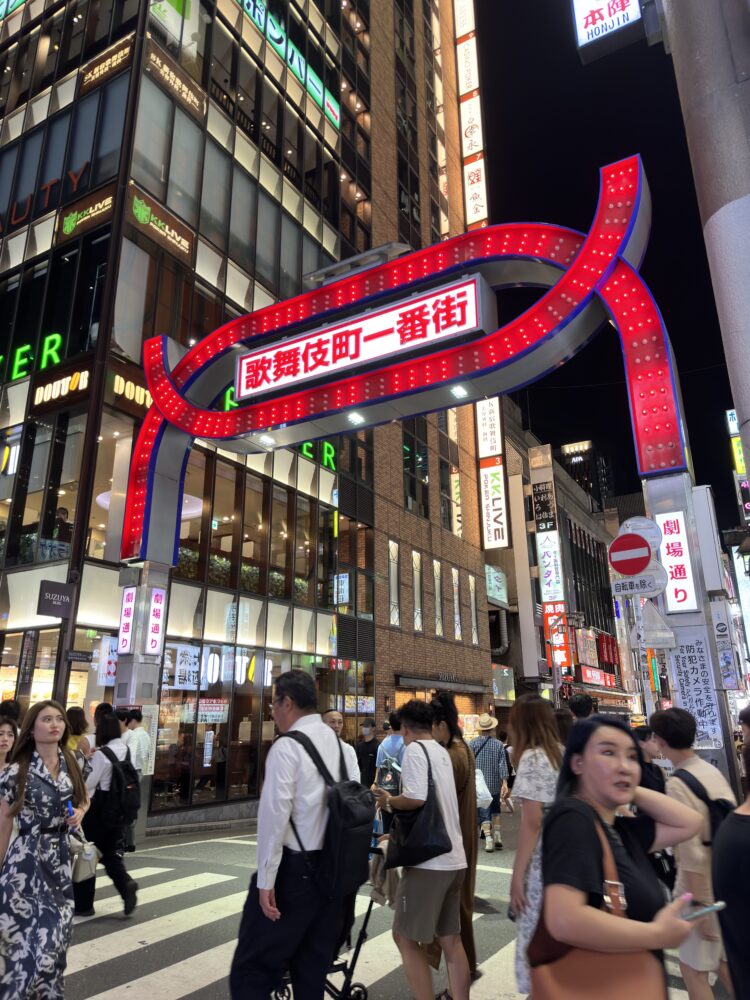
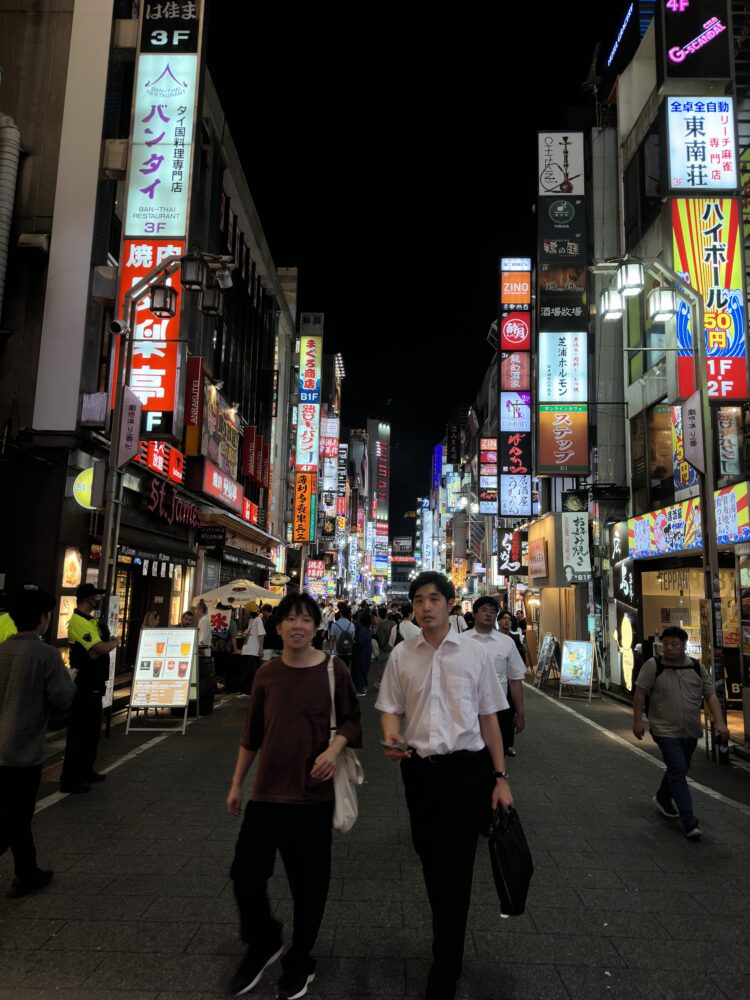
First stop would be Shinjuku night street. Truly immerse yourself in the essence of a city, there’s no better way than strolling through its labyrinthine streets.
Embark on an evening walking tour through Tokyo’s enchanting Shinjuku ward and witness the transformation as it comes alive with a mesmerizing kaleidoscope of vibrant night lights emanating from its numerous shops, eateries, and entertainment hubs. Throughout your journey, you’ll be accompanied by an engaging and knowledgeable English-speaking guide who will weave captivating tales and provide insightful commentary about the ward and its myriad attractions. Your adventure begins with a visit to Omoide-yokocho, an alleyway where you can savor a variety of authentic Japanese street food. Despite the bustling crowds in this charming alley, the opportunity to sample its delectable offerings is well worth the occasional bumping into fellow explorers. Following your time in the alleyway, you’ll venture onward to Kabukicho, the ward’s renowned red-light district where you can experience the more spirited side of Japanese nightlife.
Godzilla head
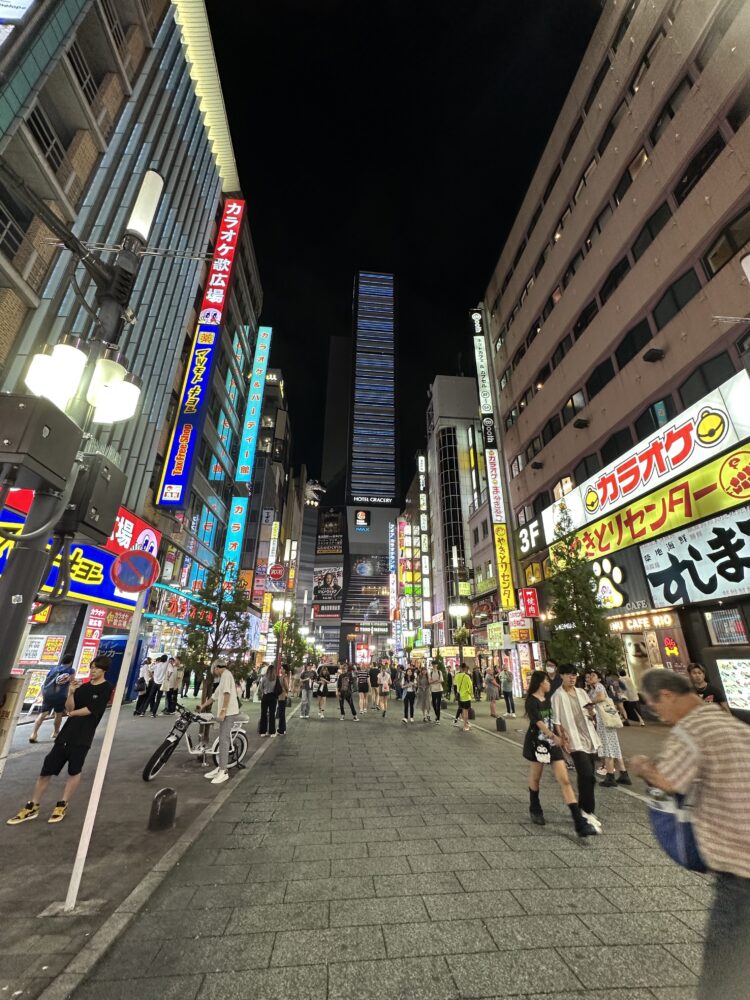
Godzilla head is placed in the middle of a Shinjuku square which can be witnessed from anywhere in that area. To be precise, this statue is a real life-size model with a height of 12 meters. This Godzilla head was established in Shinjuku Toho Building which started business in April 2015 to convey the charm of this global creature. This building is a 5 minutes walk from the jr Shinjuku station east exit or 3 minutes from seibu Shinjuku station. You can see this big fat statue from the behind of Yasukuni street which will definitely make you feel that real Godzilla has appeared on the streets of Shinjuku as it is places in the outdoor balcony on 8th floor of the Toho building. Just in case if you are using the cafe or hotel in that building then you can have a closer look of the model from the terrace.
Omoide Yokocho
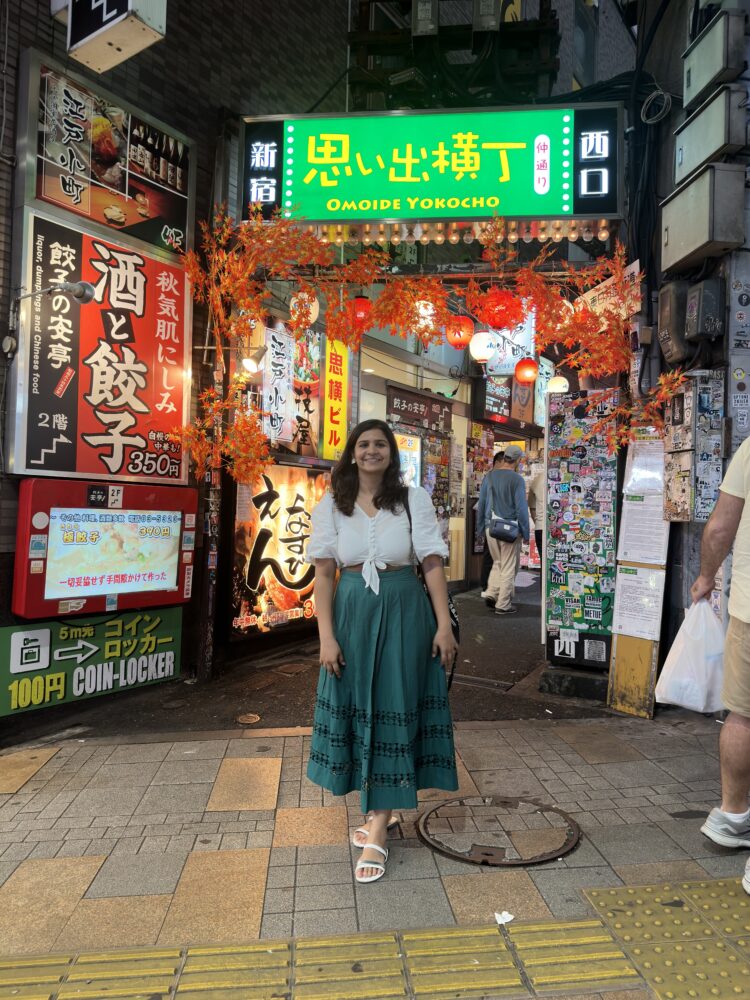
Omoide Yokocho a puzzle of narrow lanes which is nearest to the west exit of the Shinjuku station. It has a feature that stands exactly opposite of the what stations have in terms of bright light and clean modern environment. These lanes are loaded with greasy food texture, open barbecue stalls, tiny restaurants and noise with not enough space to stretch out the arms. The lanes are crowded with multilingual visitors, the streets are old and historical, food stalls have a traditional taste which makes it more special and popular. At dinner time, mostly office working people are seen boozing over the beers which are quickly served with the side of Yakitori chicken sticks. Though there are several variety of food here, they have a rule that food is prepared in an Izakaya preparation.
Primarily consisting of freshly grilled items, including seafood, chicken prepared in various yakitori styles, meat cooked on the grill, and grilled intestines. The alleys of Omoido yokocho have sign boards saying no smoking or holding ciggerates while walking on streets, it is only allowed when seating. Another rule is you cant just order beer here, ordering food is compulsory
Ichiran ramen
After an eventful yet tiring day head straight to Ichiran Ramen for a perfectly balanced dinner. Ichiran a most popular ramen place in Tokyo which was founded half a century ago. The most visited branch is in Shibuya where people wait for hours in a queue in front of the restaurants. For foreign visitors, this is the most prominent place to dig in the smoothness of ramen. Ichiran Ramen is known for its Tonkotsu (pork based) ramen in whole Japan. For over fifty years, Ichiran has been dedicated to perfecting Tonkotsu ramen, striving for excellence in the art of ramen-making. Located in Fukuoka Prefecture, renowned for its Tonkotsu ramen tradition, Ichiran’s ramen boasts a delightful creamy sweetness, complemented by delicate, thin noodles and garnished with tender slices of pork and their signature spicy red sauce. Lastly. you can skip the crowd and can have a taste of Ichiran ramen. Skip the Ichiran Shibuya and head to the Ichiran Shibuya spain-zaka as it is a lesser known branch but the taste is same. Another is, visit in the morning or late at night
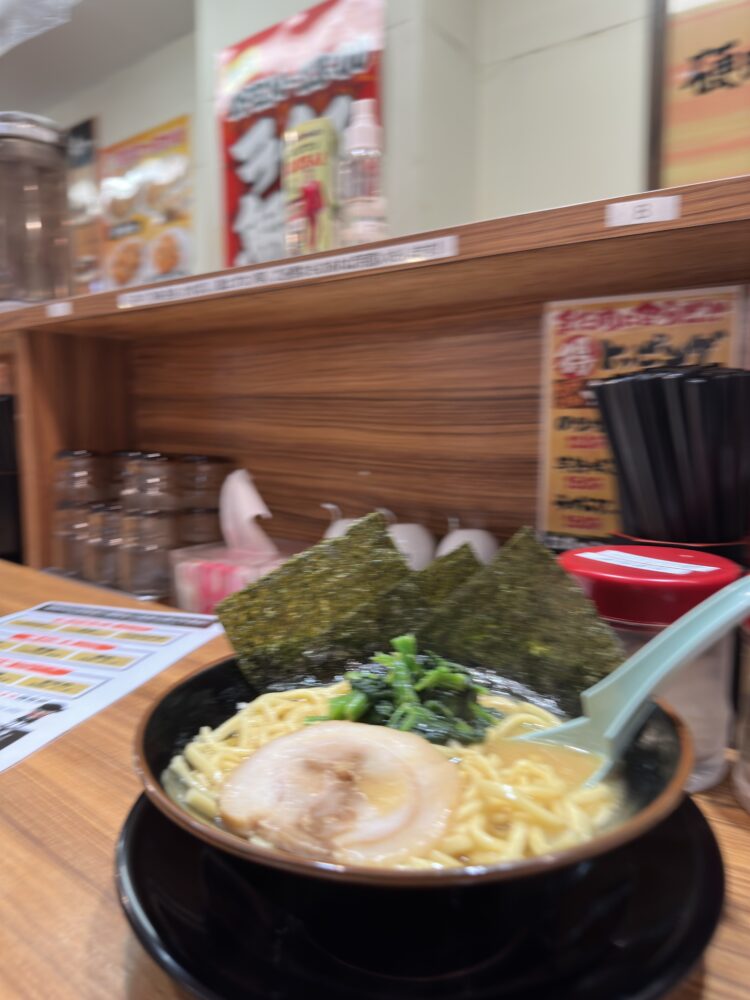
Shinjuku 3D cat billboard
To conclude the day after a delicious meal, head to the Shinjuku station east exit. There in the center you’ll see a larger than life calico cat on the screen staring at the pedestrian, who sleeps and wakes as well. The cat appears through out the day between the advertisements from when the screen turns on at 7 am to 1 am when the screen turns off. Well, a cat has a different mood throughout the day where it meows, yawns and waves its tails around. This was Tokyo’s first ever 3D billboard which features a curved LED light that displays 4K images and plays sound. The curved screen enhances the sense of depth and contributes to the breathtaking 3D effect when viewed from specific angles.
Day 2: Tokyo
Welcome to Day 2 of a journey through Japan! After an incredible first day exploring the vibrant streets of Tokyo, we’re ready to dive deeper into the richness of Japanese culture and history. Today, we’ll embark on a memorable adventure that takes us through serene gardens, iconic temples, heartwarming tales of loyalty. So, fasten your seat belts and get ready to uncover the hidden gems and enchanting stories that await us on this incredible day in the Land of the Rising Sun. Let’s begin our exploration:
Gyoen Nogaku-do
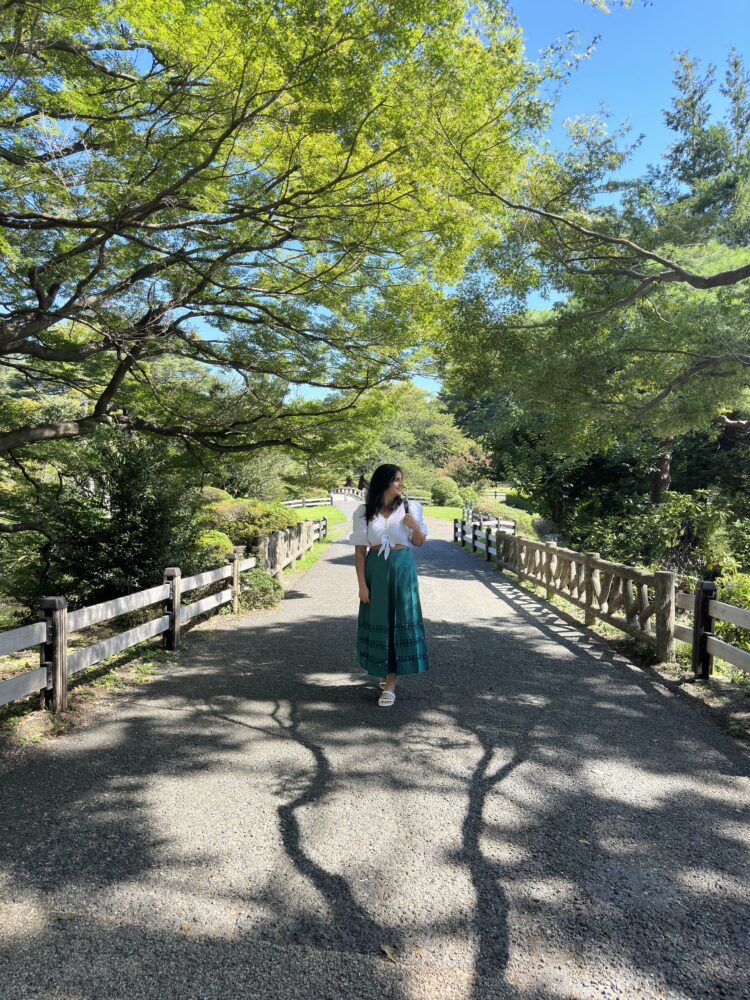
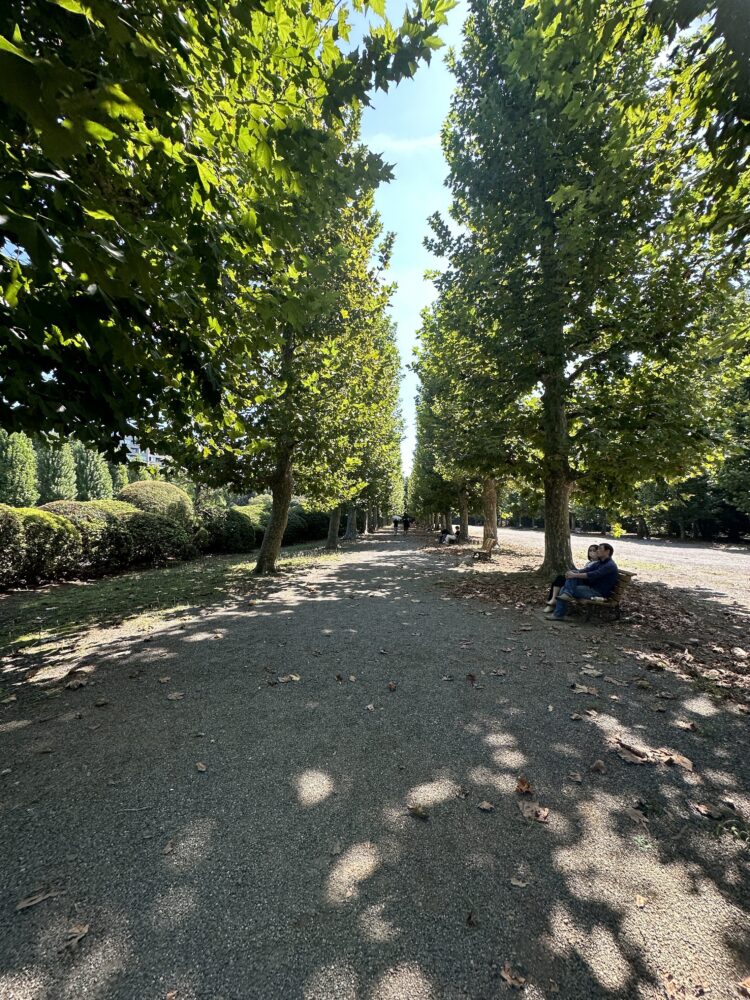
Lets start with Shinjuku Gyoen, situated just a short stroll away from the renowned Shinjuku district, stands as one of Tokyo’s largest and most beloved public gardens. Its claim to fame lies in the enchanting display of seasonal cherry blossoms that grace its landscape. Originally established during the Edo period (1603-1867) as the residence of a Tokyo feudal lord, Shinjuku Gyoen underwent a transformation into a botanical garden. In 1903, ownership of the land was transferred to the imperial family, who utilized it for recreational purposes. hues of autumn leaves. Despite suffering near-total devastation during World War II, the park was painstakingly reconstructed and reintroduced as a public park in 1949. Within its bounds, you’ll discover a Japanese garden, as well as French and English-style gardens, along with a greenhouse. Ample open spaces beckon you for leisurely strolls, allowing you to savor the beauty of cherry blossoms in spring or the vibrant
Meiji Jingu
Nestled in the technologically advanced city of Tokyo, Meiji Jingu is just a short stroll away from the eccentric streets of Harajuku. This renowned Shinto shrine remains veiled within a densely wooded enclave, casting an aura of serenity amidst the vibrant pulse of Japan’s bustling metropolis.
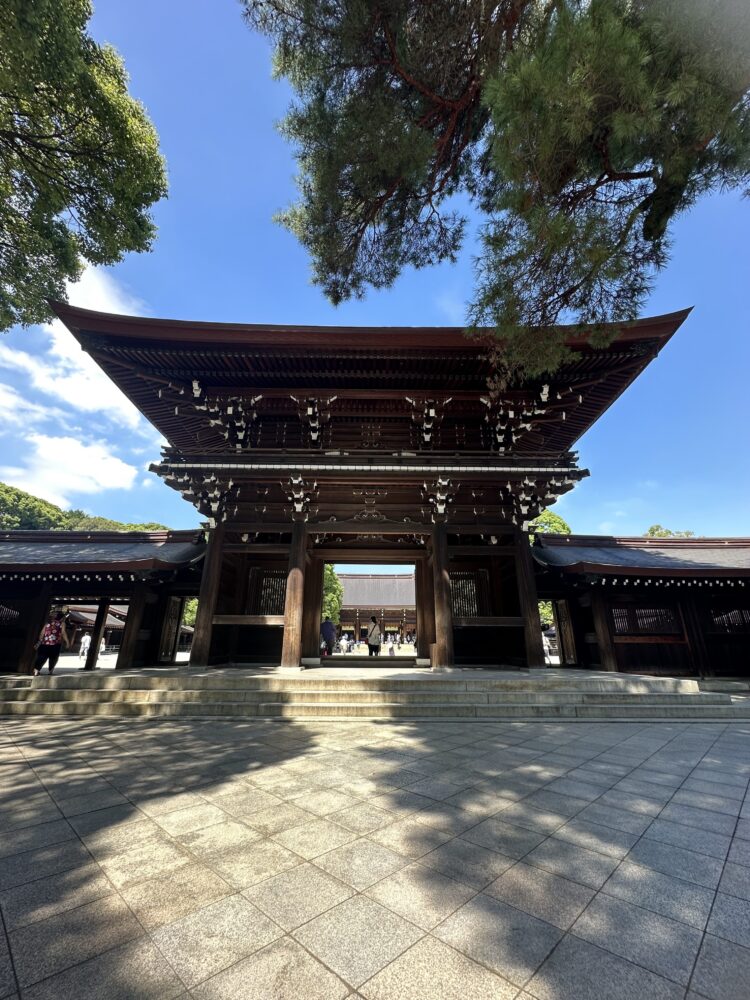
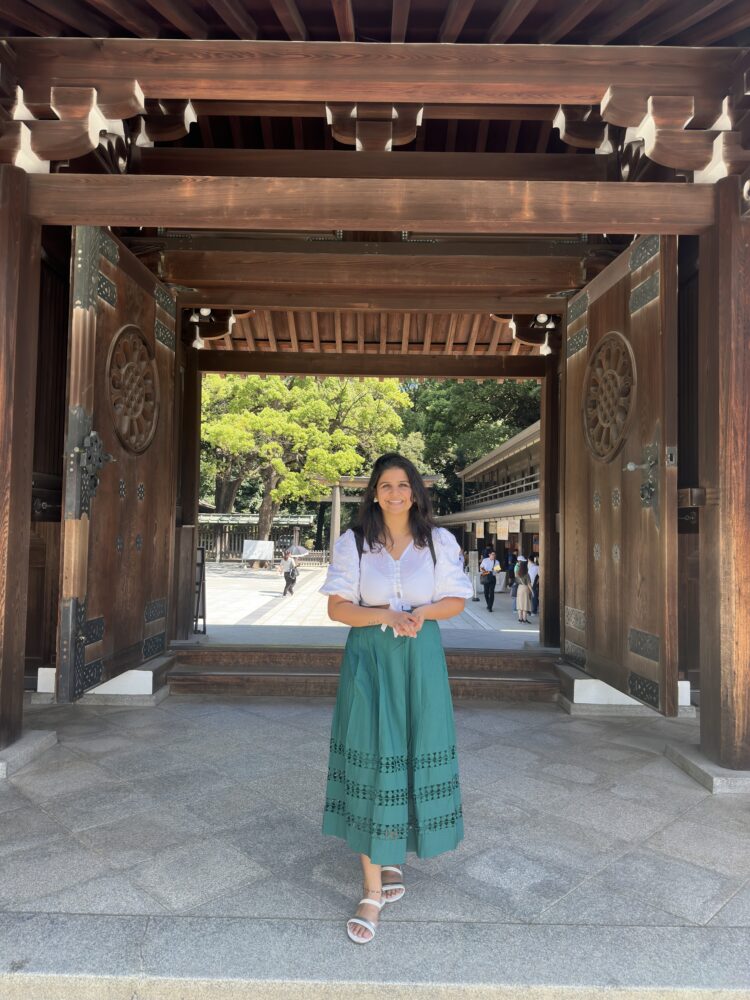
Meiji Jingu stands as one of Tokyo’s most frequented shrines, drawing millions of visitors annually. With its daily rituals, remarkable architectural marvels, and picturesque surroundings, it stands as a captivating and revitalizing attraction, appealing to both tourists and practitioners of the Shinto faith.
Yoyogi park
Yoyogi park is one of the largest city parks in Tokyo located in the Shibuya area. It features wide lawns, ponds, forested area and even an area for jogging, picnicking with friends and family and outdoor activities as well. Although Yoyogi park has a few cherry trees compared to the other location in Tokyo, making it a better Hanami place in spring. This place is also known for its Ginkgo trees forest which turns into intensely golden in color in the autumn season. Well before becoming a city park in 1967, it was a site for the Olympic village for the Tokyo Olympics in the year 1964 and before this it was a residential area for US military personnel.
Shibuya Crossing
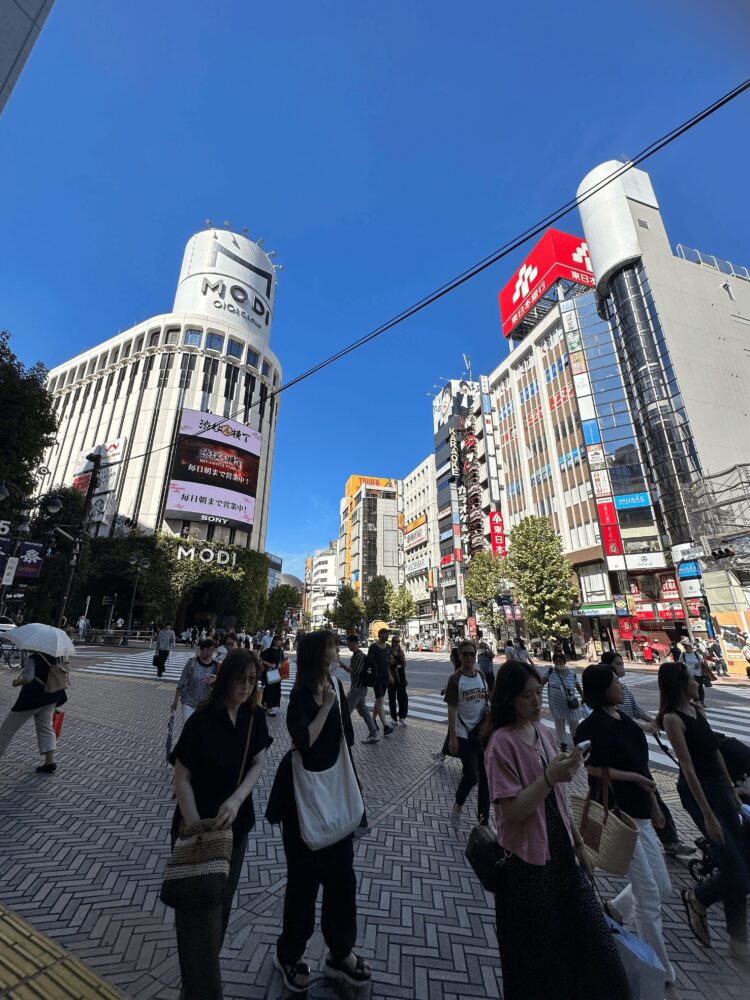
Shibuya crossing, which is the worlds busiest pedestrian street in the whole world.
Shibuya Crossing stands as one of Tokyo’s most iconic landmarks, capturing the spotlight in numerous films, magazines, and blogs. During its busiest periods, an estimated 1,000 to 2,500 individuals navigate their way across this junction every two minutes, a volume large enough to swiftly fill a football stadium. This remarkable spectacle has earned it the affectionate nickname “scramble,” reflecting the diverse flow of pedestrians converging from all directions.
Hachiko statue
The Hachiko statue is an unofficial landmark of Japan but a very famous meeting point nowadays. Hachiko statue near Shibuya station is a homage to the loyal Akita dog who used to visit and wait for his master everyday even after his death to pay respect. This story became so legendary and heart touching that a small statue was erected in front of the Shibuya station in memory of Hachiko. This is a starting point for every tourist who visits Tokyo or a convenient meeting point for friends. Foreigners here are always queuing to click photo with that statue which is just a few minutes away from the famous Shibuya scramble.
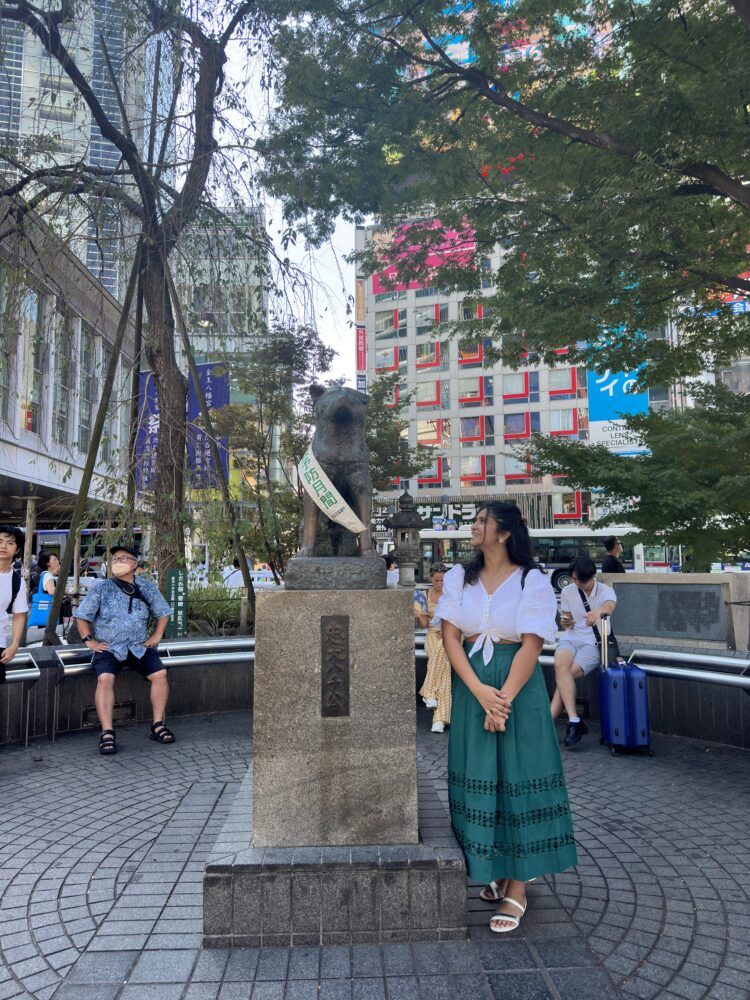
Eat at Shibuya center Gai
Center Gai, located in Shibuya, serves as the primary shopping street in the area. The main street and its adjoining side streets in Center Gai are adorned with an array of diverse shops, including eateries, bars, clubs, coffee houses, boutiques, and gaming centers. The competitive landscape in this area ensures that both food and shopping options are of high quality, presenting a wide variety for patrons to choose from. Center Gai boasts an abundance of sweet shops, ice cream parlors, and crepe vendors catering primarily to the younger crowd. In the nearby of Shibuya Center-Gai/Koen-Dori, you’ll find a plethora of culinary delights to explore. Highly recommended cuisines in this area include Sushi, Sashimi, Tempura, Teppanyaki, Shabu-shabu/Sukiyaki, Yakiniku, Taverns (Izakaya), and Kaiseki (course menu) dining. If you’re on the lookout for dining options, consider exploring the neighboring areas then Ebisu, Dogenzaka/Shinsen, Daikanyama, and the Samurai Armor Photo Studio, a wide array of delectable restaurants to choose from.
Gotokuji temple
Situated in the Bunkyō special ward of Tokyo, Gotokuji Temple is somewhat removed from the primary city attractions. Gotokuji Temple is renowned throughout Japan as the presumed birthplace of the Maneki-neko, or the “beckoning cat” figurine, believed to usher in good fortune and success to those who keep it in their bedroom or study.
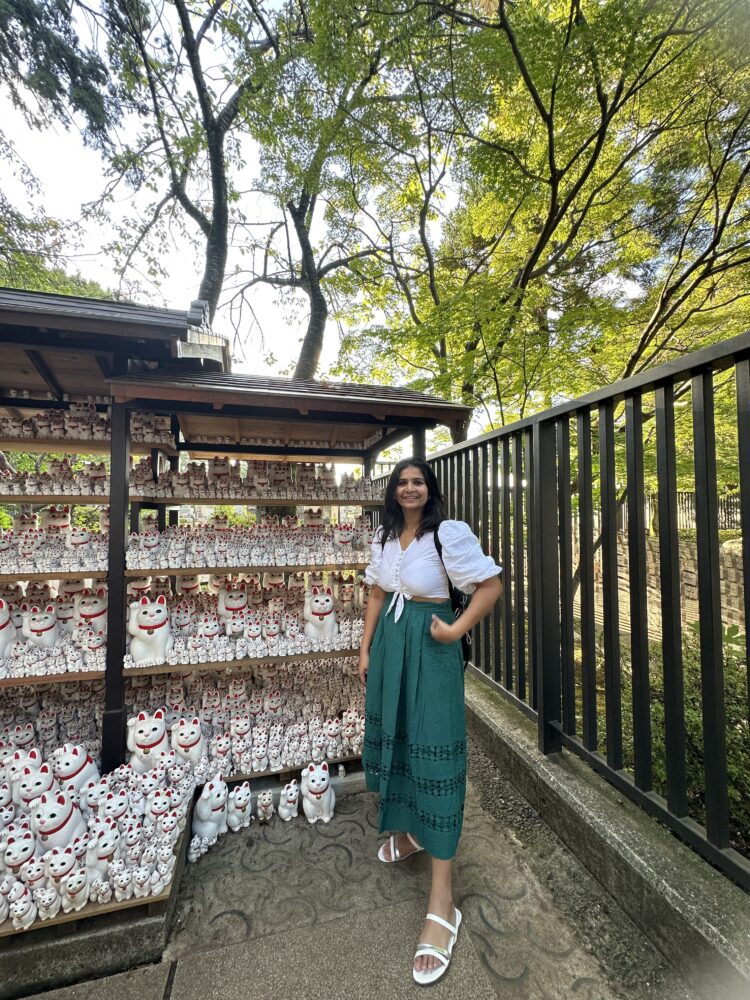
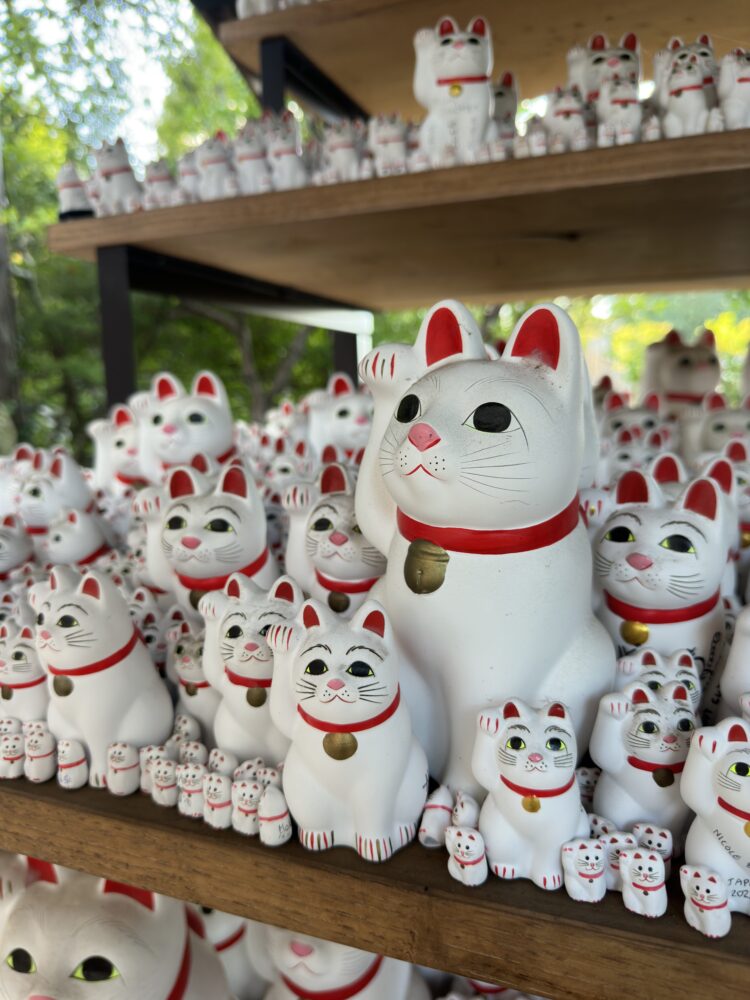
While this auspicious talisman is widely embraced by Chinese and Vietnamese communities, leading many to mistakenly associate it with Chinese origins, its true birthplace undeniably lies in Japan, with Gotokuji Temple being a key link to its heritage. When you visit Gotokuji, you’ll be greeted by an abundance of beckoning cats, more so than at any other temple in Japan. These figurines come in various materials, including wood, stone, metal, and porcelain, and are available in a range of colors. Despite the diversity, the traditional white Maneki-neko remains the most prevalent and cherished variation.
Shibuya skywalk night
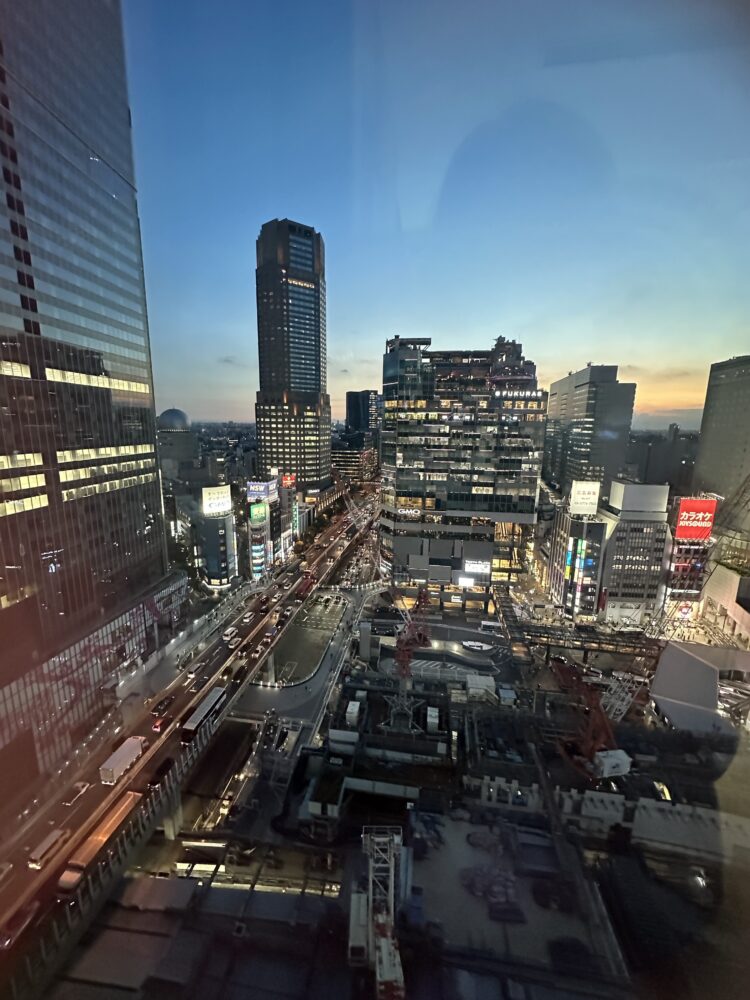
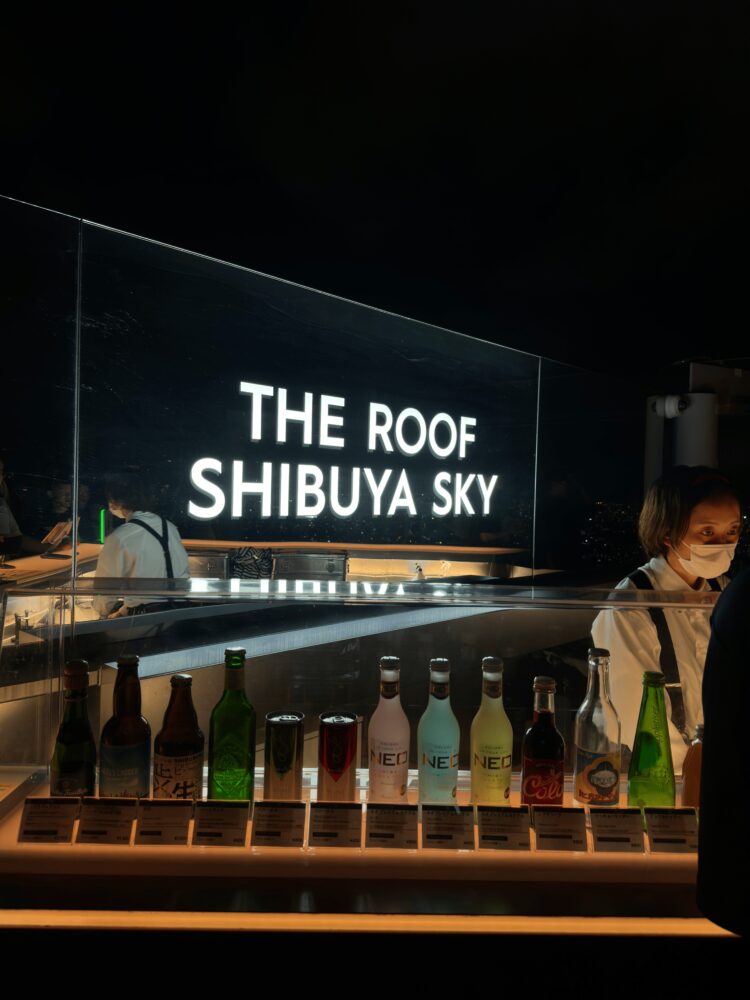
Jaw dropping view from the 230 ft above the bustling and busiest pedestrian crossing in the city of Japan is a major tourist attraction known as Shibuya skywalk. Stepping onto the ascending escalator will make all the hush-push around you disappear as soon as you start reaching the top and it will provide a beautiful view of the whole lot of Tokyo with 360% view of the city including prominent view of all touristy attractions, like Tokyo tower, Tokyo skytree and Mont Fuji on some clear days. It turns out even more beautiful when the sky shows out its vibrant tone at the time of the sunset. Also, be thorough with the sunset timings as there is not set timings and time might fluctuate everyday. Sunset being the ideal time for all the visitors, also makes this place crowded. So, visit as early as possible around 1.5 hours before because there is no time limit once you enter.
Shibuya 3D Panda
The most recent addition to Tokyo’s array of 3D billboards is a solitary screen located in close proximity to Shibuya Scramble Crossing. You can spot this billboard along Shibuya Center Gai, just around the corner from Starbucks Shibuya Tsutaya and above the Yamashita Honki Udon shop. To catch a glimpse of the endearing panda, keep an eye out for the animation of a casino slot machine – the panda makes its appearance once the machine hits the jackpot. This panda display is undeniably charming, featuring various actions such as manipulating a knob to adjust its box’s size, playing with a bamboo branch, and observing passersby.
Dinner at Golden Gai
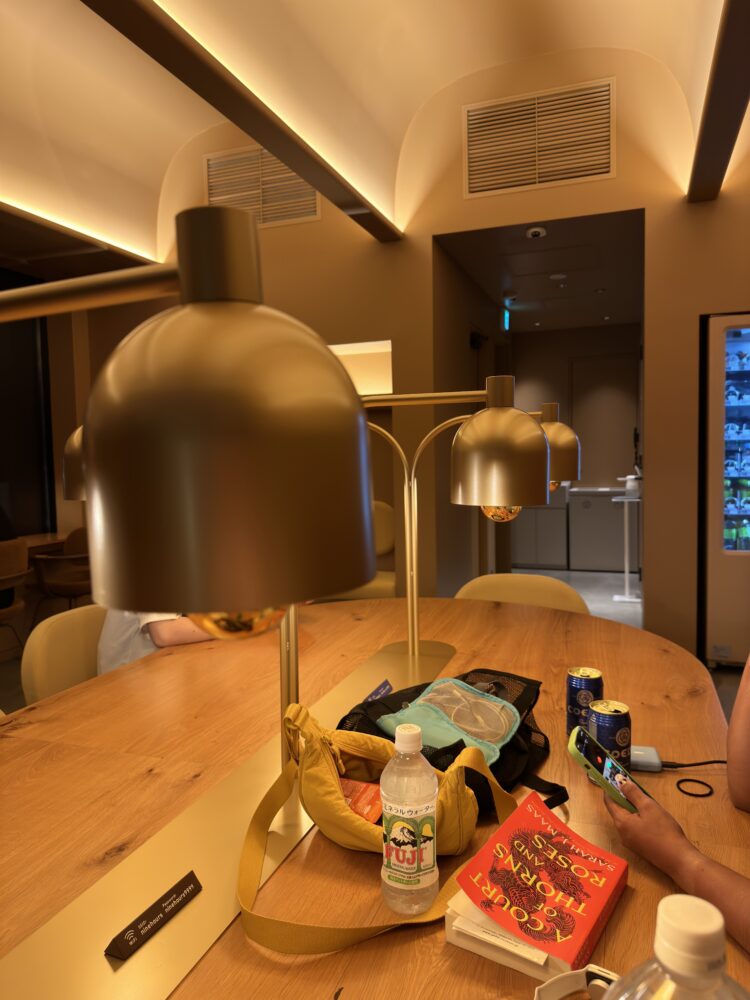
After a wonderful day out head towards Golden Gai area war a cheerful meal Tokyo boasts a plethora of glamorous bars and clubs, but nestled within this modern cityscape lies Golden Gai, often referred to as the “Golden District.” It stands as a unique enclave where you can glimpse the enduring echoes of postwar nightlife.
Here, approximately 200 diminutive bars, eateries, and clubs are squeezed into a compact cluster of somewhat dilapidated, weathered structures that hark back to earlier times. Unlike the towering skyscrapers that dominate the surrounding area, most of the buildings in Golden Gai reach a modest height of no more than two stories.If you are looking for a comforting ramen meal then try Ramen Nagi, they are known for serving boldly savory and flavorful sardine ramen bowl which do not contain strong fishy taste. Another comforting place is golden gai miso soup. Well day two ends here.
Day 3: Tokyo
TeamLab Planets
The museum houses only nine installations, but they are generously spread out across a vast expanse of 10,000 square meters, providing ample room for each exhibit. What sets these installations apart is their emphasis on creating a sense of immersive experience, setting them apart from the recently closed teamLab Border less Museum.
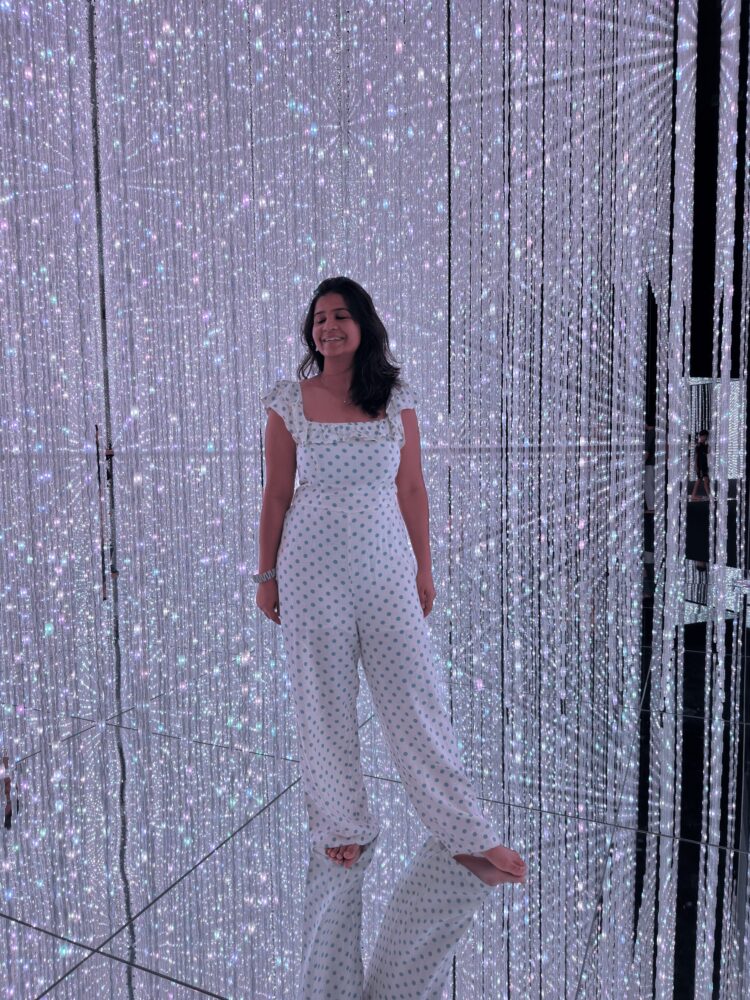
In a recent development, the museum added an on-site vegan ramen restaurant and expanded with a new indoor/outdoor Garden Area, featuring two additional installations. Conveniently located adjacent to Shin-Toyosu Station, teamLab Planets offers a more personal and interactive encounter with the collective’s distinctive digital art.
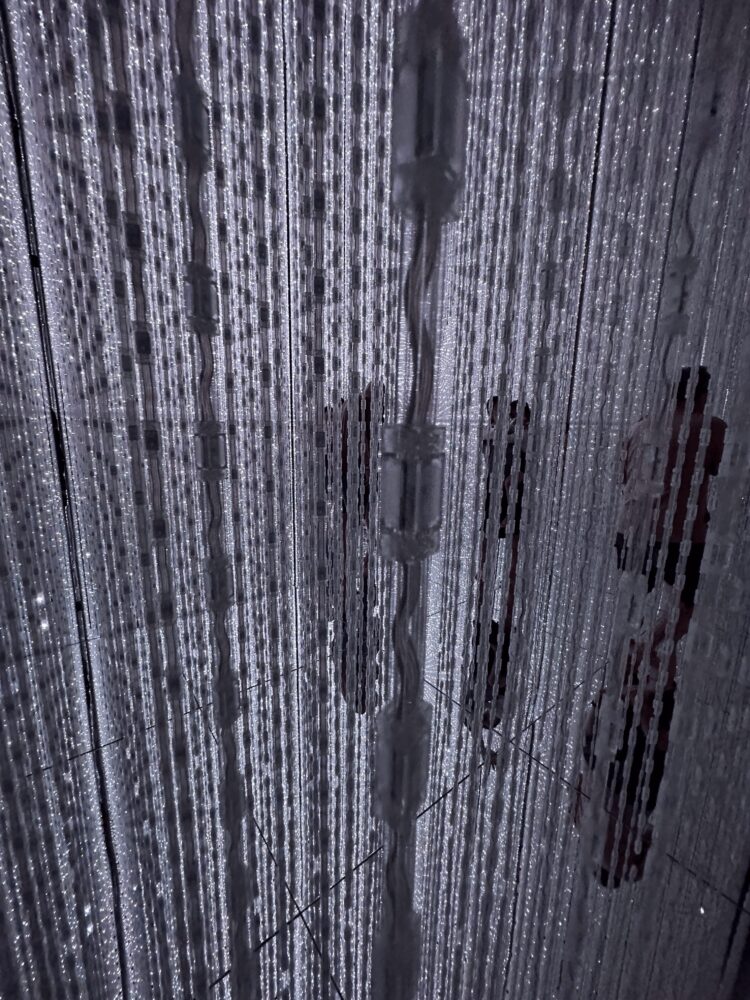
Odaiba beach
The 800-meter-long Odaiba Beach is unmistakably man-made and situated in a highly urban environment. Given that swimming and fishing are prohibited here, the primary purpose of this area is for leisurely strolls and relaxation. On sunny days, some Japanese individuals may dip a toe in the water, particularly children who engage in activities like football or Frisbee. Adequate restroom and shower facilities are, of course, readily available. A delightful experience awaits those who choose to take a leisurely walk along the beach beneath the towering shopping malls, offering breathtaking vistas of the renowned Rainbow Bridge and the city center’s skyline as a backdrop, which includes the iconic Tokyo Tower. Odaiba Beach is an ideal location for observing mesmerizing sunsets and enjoying the enchanting spectacle created by the nighttime lights from the malls above
Tokyo sky tree
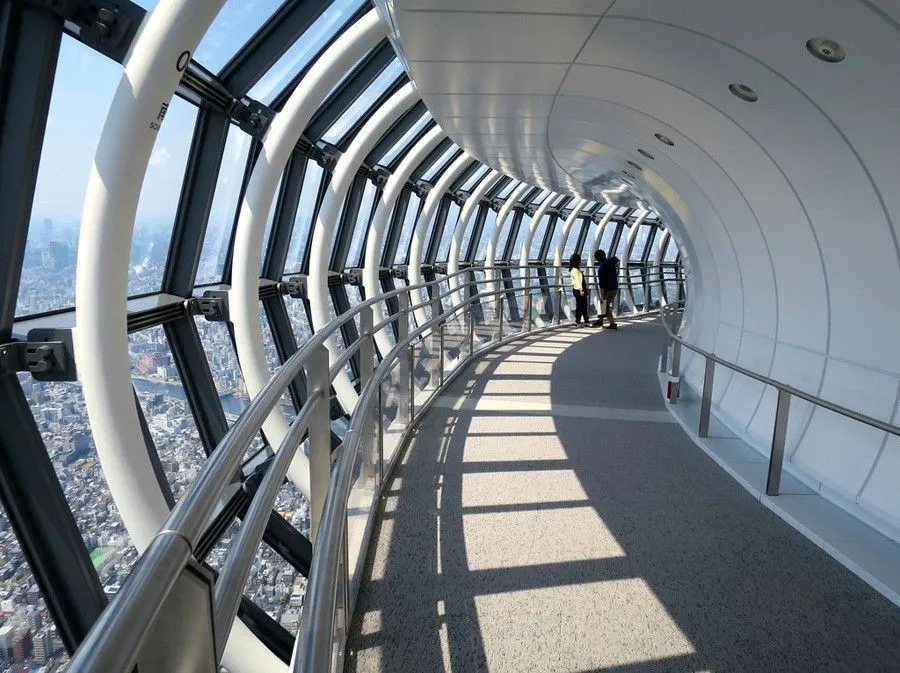
The Tokyo Sky Tree is a broadcasting and telecommunications tower located in Tokyo, Japan. Upon its inauguration on May 22, 2012, it stood as the world’s second-tallest structure, following the Burj Khalifa in Dubai, with a towering height of 2,080 feet (634 meters). Notably, the Tokyo Sky Tree holds the distinction of being the world’s tallest freestanding tower, surpassing Tokyo Tower, the city’s previous tallest structure, by an impressive 988 feet (301 meters).
This remarkable tower offers two publicly accessible observation areas: the Tembo Deck and the Tembo Gallery, also known as the Galleria. The Tembo Deck comprises three levels, with an observation floor situated at an elevation of 1,148 feet (350 meters), overlooking two floors hosting a variety of restaurants. The Tembo Gallery consists of two interconnected floors, linked by a spiraling circular ramp. The higher of these two floors extends to a breathtaking altitude of 1,480 feet (451 meters) above the ground
Senso-ji temple
Sensoji is a Buddhist temple located in the Asakusa which is the most colorful and popular temples in the region. The temple is also known by the name of the Asakusa Kannon temple. According to the legend, in the year 628, two siblings discovered a statue of Kannon, the goddess of mercy, while fishing in the Sumida River.
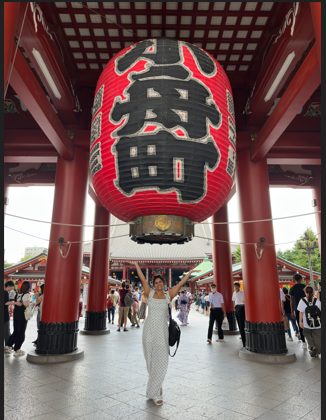
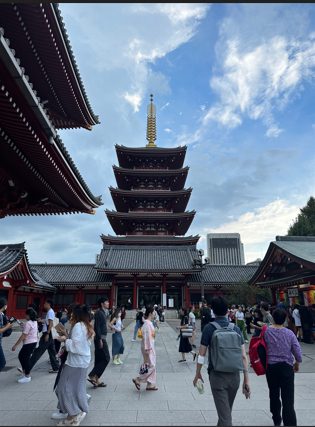
Despite their attempts to return the statue to the river, it inexplicably kept coming back to them. As a result, Sensoji Temple was constructed in close proximity as a dedicated place for the worship of the goddess Kannon. This temple was finished in 645, earning it the distinction of being Tokyo’s most ancient temple. Despite their attempts to return the statue to the river, it inexplicably kept coming back to them. As a result, Sensoji Temple was constructed in close proximity as a dedicated place for the worship of the goddess Kannon. This temple was finished in 645, earning it the distinction of being Tokyo’s most ancient temple.
Lunch at Asakusa
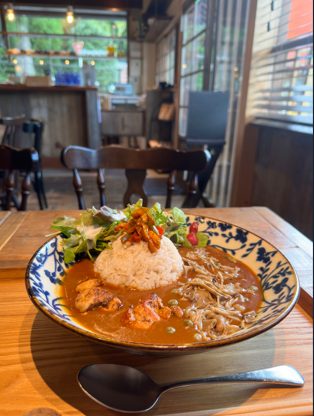 After visiting Sensoji temple in Asakusa, the unique center of historical downtown in Tokyo. It attracts a lot of visitors due to its cultural and historic perseverance.The food is outstanding and has no shortage of dining options as till date there are places which was opened in 1880 and so more. The food here is made and served in a proper traditional way. So for lunch head straight to the famous food stalls for an appetizing meal. Such as visit Sometaro for amazing okonomiyaki, for authentic ramen head to Ramen yoroiya as they serve tsukemen style zaru ramen and also have vegan ramen and gyoza on there menu, for traditional tempura dishes visit Tempura Daikokuya and lastly for some traditional retro bar visit Kamiya bar for moth watering cocktail
After visiting Sensoji temple in Asakusa, the unique center of historical downtown in Tokyo. It attracts a lot of visitors due to its cultural and historic perseverance.The food is outstanding and has no shortage of dining options as till date there are places which was opened in 1880 and so more. The food here is made and served in a proper traditional way. So for lunch head straight to the famous food stalls for an appetizing meal. Such as visit Sometaro for amazing okonomiyaki, for authentic ramen head to Ramen yoroiya as they serve tsukemen style zaru ramen and also have vegan ramen and gyoza on there menu, for traditional tempura dishes visit Tempura Daikokuya and lastly for some traditional retro bar visit Kamiya bar for moth watering cocktail
Hat Cafe
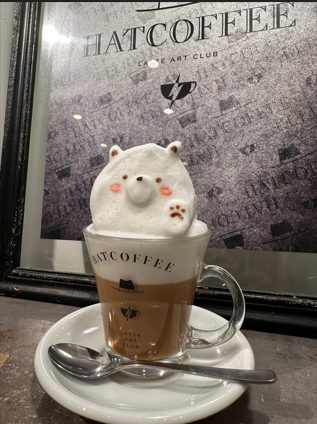
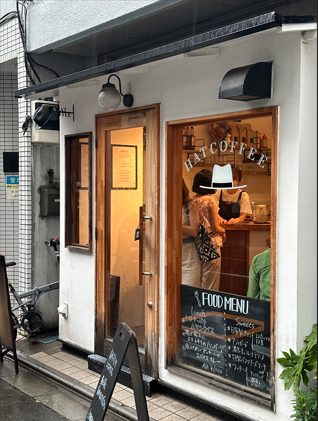 After a perfect lunch go to Hat cafe is known for its 3D latte art which offers ridiculous as well as beautiful coffee with so much of creativity. The coffee is decked in detailed illustration in a 3D format on a milk foam. There are frequent cameos from Snoopy, Mickey Mouse to many anime characters and the most favorite of them to be Pikachu and the characters from Demon Slayer. You can also ask to create the art of your beloved dog or any pet, as they are perfect at what they do. They sit back at corner and start creating there magic of what they have received in the order process. They use there phone to look at the image sent to them throughout the process, also you can stand by and look at how and what they are doing. Hat cafe has a lot of different flavors in custom-made drinks which are unique and besides that they even have wide varieties of pastries.
After a perfect lunch go to Hat cafe is known for its 3D latte art which offers ridiculous as well as beautiful coffee with so much of creativity. The coffee is decked in detailed illustration in a 3D format on a milk foam. There are frequent cameos from Snoopy, Mickey Mouse to many anime characters and the most favorite of them to be Pikachu and the characters from Demon Slayer. You can also ask to create the art of your beloved dog or any pet, as they are perfect at what they do. They sit back at corner and start creating there magic of what they have received in the order process. They use there phone to look at the image sent to them throughout the process, also you can stand by and look at how and what they are doing. Hat cafe has a lot of different flavors in custom-made drinks which are unique and besides that they even have wide varieties of pastries.
Akhibara- anime world
Akihabara, known as Akiba for short, is a central Tokyo district renowned for its numerous electronics shops and has also become known as the epicenter of Japan’s otaku (enthusiast fan) culture. The area features a multitude of stores and businesses dedicated to anime and manga, interspersed among the electronic retailers in the vicinity.
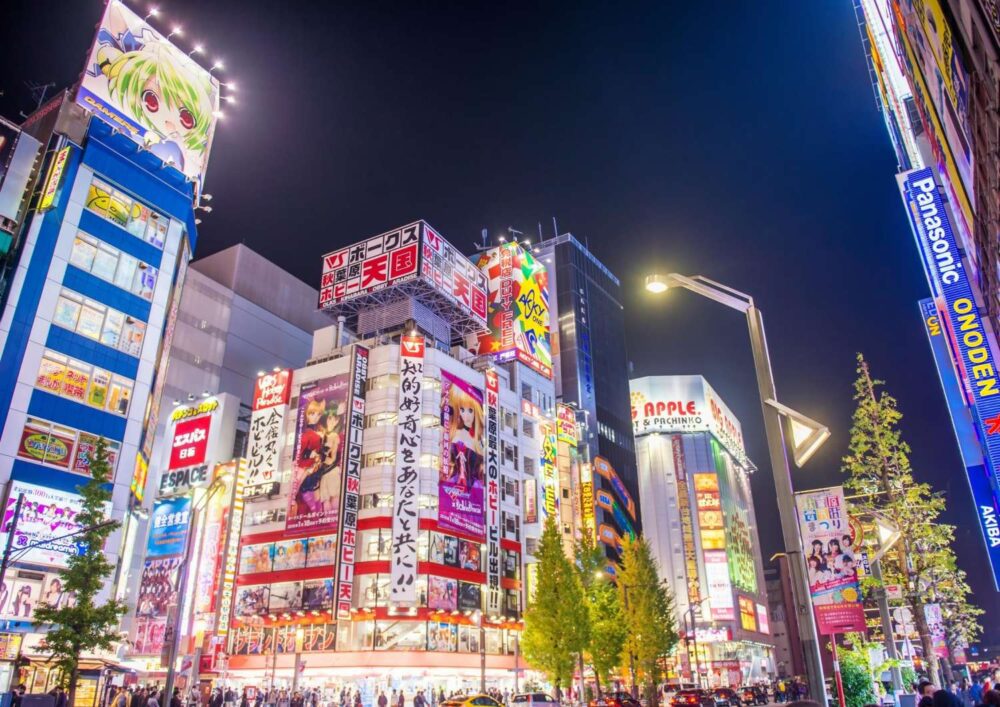
The nature of Akihabara has undergone continuous transformation over the years and continues to evolve. In recent decades, Akihabara has solidified its status as a hub for Japanese otaku and anime enthusiasts, with numerous shops dedicated to anime, manga, vintage video games, figurines, trading cards, and various collectibles taking up the available spaces amid the electronics stores.
Tokyo Station
Tokyo Station ranks among Tokyo’s prominent train stations, alongside other major hubs like Shinjuku Station, Shibuya Station, and Shinagawa Station. It holds the distinction of being not only the largest but also the busiest train station in Japan, facilitating the departure of over 3,000 daily trains, connecting to nearly every major city across the country. Within the ticket gates of Tokyo Station lies a highly convenient shopping area known as “Ekinaka,” which translates to “inside the station.” This space hosts a diverse range of commercial facilities, featuring numerous shops specializing in Tokyo souvenirs, bento lunch boxes, and convenient convenience stores
Imperial palace
A short walk from the Tokyo station there is a residence of Japan’s imperial family known as Imperial palace. The current palace is located on the former site of Edo palace, a large park there which is covered with massive stone walls and wide channels are dug out to keep the enemy away. After the completion of the Imperial Palace in 1888 by the country’s capital and imperial residence it was destroyed in the world war 2 but was later established with the same structure and design. The inner grounds of the palace are not open for the public but visitors can visit only on 2 days of the year in January and February. We can even witness the sight of the Imperial family as they make public appearance on those days.
Dinner at Udon Shin
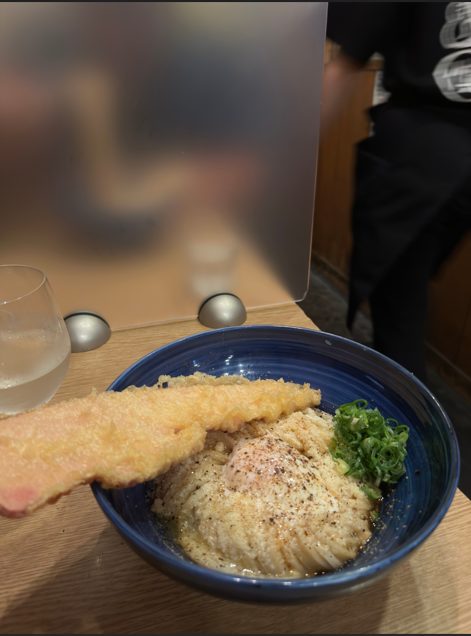
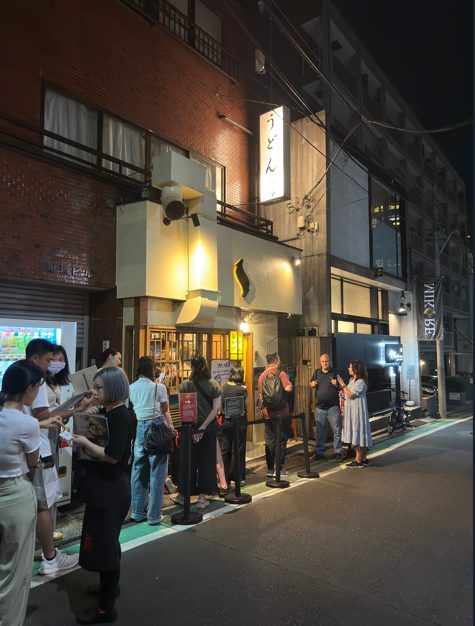
After exploring such a beautiful places with a hectic time schedule you must be hungry and craving for Ramen or Udon because these are the specialty in Japan. So, you can head towards Udon Shin in Shibuya. It is a very popular joint to explore the variety of Udon to try in hot and cold version, as the wheat udon are freshly made with hands. The zaru, carbonara, kake udon, tanuki udon and tempura udon are the most famous variations here. When it comes to reservation, you have to book way prior as there is a rush which will make you wait for 4-5 hours and sometimes even more. The accessibility is effortless from many stations though the nearest is the Shinjuku station. Well day 3 came to an end but do not get over it yet because day 4 is even more exciting in this vibrant Tokyo.
Day 4: Day trip to Yokohoma
Mario Karting
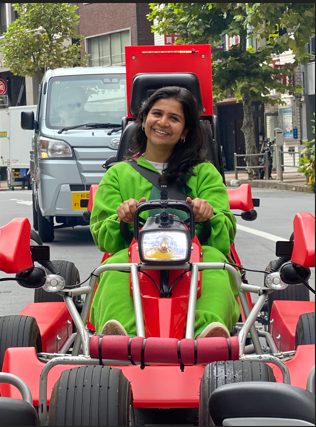 In Japan for about 45 minutes to 1 hour or maybe more than that there is a famous street kart in which you will get a guided tour of the vibrant Tokyo city. On the trip to Tokyo, there is a lot to explore so recently many have discovered one of the coolest and unique experiences in the city that has to offer: cruising through the streets of Tokyo in a Go-Kart, Mario kart, street- karting. Everything is the same so all we do in a dressed up attire as superheroes! Tokyo is renowned for its cute and quirky attractions, and this adventure definitely lived up to that reputation.
In Japan for about 45 minutes to 1 hour or maybe more than that there is a famous street kart in which you will get a guided tour of the vibrant Tokyo city. On the trip to Tokyo, there is a lot to explore so recently many have discovered one of the coolest and unique experiences in the city that has to offer: cruising through the streets of Tokyo in a Go-Kart, Mario kart, street- karting. Everything is the same so all we do in a dressed up attire as superheroes! Tokyo is renowned for its cute and quirky attractions, and this adventure definitely lived up to that reputation.
Following this fantastic 2-3 hour experience, consider embarking on a one-day excursion to Yokohama, which is conveniently just an hour’s journey away. Yokohama ranks as the second most densely populated urban area in Japan, trailing only Tokyo. Access to Yokohama is straightforward, whether you’re traveling from within Japan or internationally, as the city is merely a 25-minute train ride from Tokyo Station and a quick 22-minute commute from Haneda Airport.
Cosmo World
 In a compact area filled with a lot many adventures and rides on a bay side of Minato Mirai district in Yokohama there is an amusement park named cosmo world. It is a perfect destination for a family outing, a day out with friends and for a romantic date. The entry to the park is usually free, so you can purchase tickets for the individual rides you are choosing on. You can book from the discount book of coupons if you are thinking of trying a lot of rides.
In a compact area filled with a lot many adventures and rides on a bay side of Minato Mirai district in Yokohama there is an amusement park named cosmo world. It is a perfect destination for a family outing, a day out with friends and for a romantic date. The entry to the park is usually free, so you can purchase tickets for the individual rides you are choosing on. You can book from the discount book of coupons if you are thinking of trying a lot of rides.
Shinko circle walk
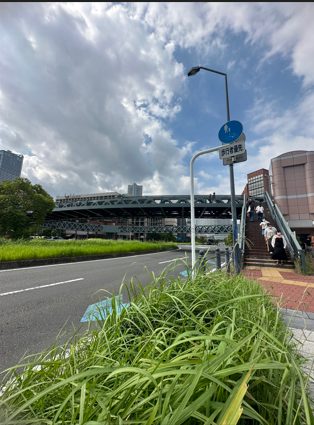
Shinko circle is a pedestrian bridge where you can walk anytime of the day. This walkway is in the middle of the city and you can see the vibrant hustling of the city from morning to night.
Ferris wheel and cable car ride.
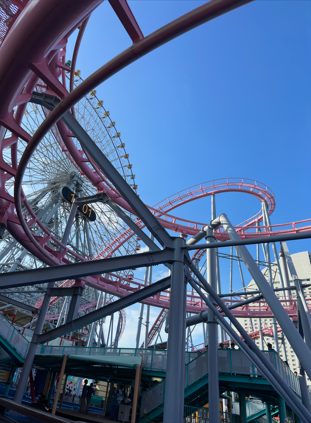
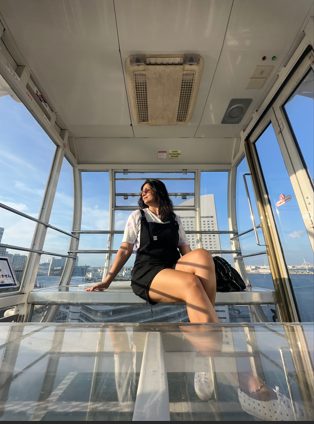 You might have seen a lot of photos of Yokohama’s known skyscrapers but in that you might have seen a Ferris wheel which can be seen in every picture near the Minato Mirai area. It is because this Ferris wheel has a diameter of 100m and has 60 gondolas holding up to 480 people. This gives a scenic few of the whole city like, You can enjoy breathtaking views from The Landmark Tower, which includes sights of three Queen’s Towers, various hotels, Yokohama Bay, and the Bay Bridge. Additionally, you can catch glimpses of Haneda Airport, the Red Brick Warehouses, Osanbashi Pier, the Marine Tower, and Yamashita Park. If you’re fortunate, you may even spot the Shinjuku skyscrapers, Mount Fuji, and the Boso Peninsula.
You might have seen a lot of photos of Yokohama’s known skyscrapers but in that you might have seen a Ferris wheel which can be seen in every picture near the Minato Mirai area. It is because this Ferris wheel has a diameter of 100m and has 60 gondolas holding up to 480 people. This gives a scenic few of the whole city like, You can enjoy breathtaking views from The Landmark Tower, which includes sights of three Queen’s Towers, various hotels, Yokohama Bay, and the Bay Bridge. Additionally, you can catch glimpses of Haneda Airport, the Red Brick Warehouses, Osanbashi Pier, the Marine Tower, and Yamashita Park. If you’re fortunate, you may even spot the Shinjuku skyscrapers, Mount Fuji, and the Boso Peninsula.
On April 22nd of this year, Yokohama is set to unveil the Yokohama Air Cabin, a brand-new seafront cable car system. This innovative rope way will establish a direct link between JR Sakuragicho Station and the Shinko Pier in the Minato Mirai district. While cable cars are typically associated with mountainous terrain, the Yokohama Air Cabin will be Japan’s inaugural permanent cable car system connecting urban areas across flat ground.
Cup noodle Museum
Then the next stop would be the Noodle museum. Which is the most exciting and interesting museum ever for foodies and noodle lovers. Situated in Yokohama’s Minato Mirai District, the Cup Noodles Museum is a delightful and engaging establishment that delves into the origins of instant ramen noodles through a blend of playful displays and interactive workshops. This museum was established by the Nissin Food company, whose founder introduced instant ramen noodles in 1958 as a quick and convenient meal option. Notably, it is the second museum dedicated to cup noodles in Japan, with the first being the Cup noodles Museum located in Ikeda, to the north of Osaka. The museum also offers a range of activities, with the highly sought-after My Cup noodles Factory workshop being a standout attraction. Here, visitors have the opportunity to craft their personalized cup noodles by combining different soup flavors and toppings. This experience comes at a cost of 500 yen and may reach capacity on days with high visitor turnout.
Red brick warehouse
In the late 19th century, as Japan embraced international trade, Yokohama emerged as the primary gateway for commerce heading into the Tokyo region. The iconic red brick warehouse, also known as Akarenga, was constructed during the Meiji era to support Yokohama’s port operations, functioning as a customs checkpoint to oversee the inflow of goods through the port. In contemporary times, this warehouse complex has evolved into a dynamic destination housing a variety of shops and eateries. Within its premises, the Event Plaza serves as a venue for markets and various outdoor festivities. Additionally, the warehouse includes several event halls used for concerts, exhibitions, and more. Adjacent to the Red Brick Warehouse, the Red Brick Park offers a spacious grassy expanse where one can unwind while enjoying panoramic views of the bay and passing ships.
Eating at Yokohama China town
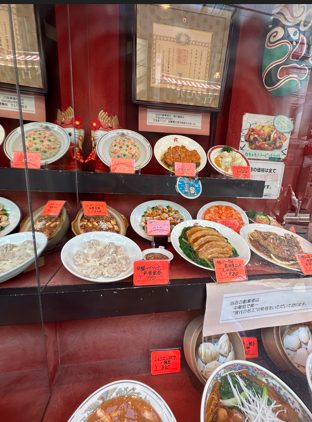
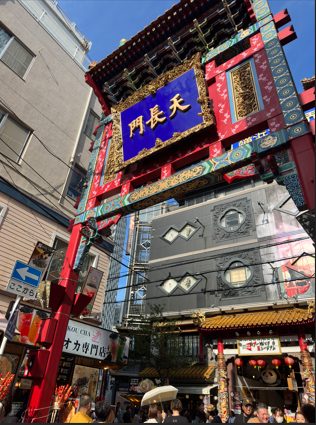
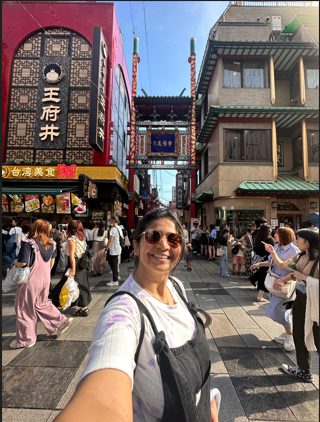 Yokohama is the second largest city in Japan and has the biggest Chinatown in whole Asia, namely Yokohama Chukagai. In this Yokohama Chinatown you can have everything you desire from Hong Kong’s cuisine to Taiwanese noodle soup. Everything is so comforting and incredible food is right around every corner. Exploring the authentic Chinese cuisine in Yokohama Chinatown is best experienced by embarking on a street food adventure, where you can find restaurants offering tabehoudai (all-you-can-eat) deals. For the most staple meal of this Chinatown try Yaki shoronpo or soup dumpling, Taiwanese specialty try Koshou Mochi a black paper bun. Also try these unique dishes like Kuro Goma An Iri Shiratama a rice dumpling filled with sesame and served in ginger soup, Panda buns filled with red bean paste and lastly, Annindofu an apricot kernel milk pudding. There are a lot more options to choose from when visiting but these are the famous dishes here.
Yokohama is the second largest city in Japan and has the biggest Chinatown in whole Asia, namely Yokohama Chukagai. In this Yokohama Chinatown you can have everything you desire from Hong Kong’s cuisine to Taiwanese noodle soup. Everything is so comforting and incredible food is right around every corner. Exploring the authentic Chinese cuisine in Yokohama Chinatown is best experienced by embarking on a street food adventure, where you can find restaurants offering tabehoudai (all-you-can-eat) deals. For the most staple meal of this Chinatown try Yaki shoronpo or soup dumpling, Taiwanese specialty try Koshou Mochi a black paper bun. Also try these unique dishes like Kuro Goma An Iri Shiratama a rice dumpling filled with sesame and served in ginger soup, Panda buns filled with red bean paste and lastly, Annindofu an apricot kernel milk pudding. There are a lot more options to choose from when visiting but these are the famous dishes here.
Gundam Factory Yokohama
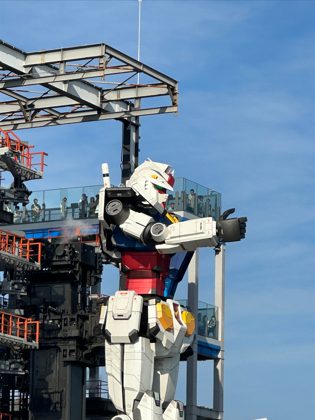
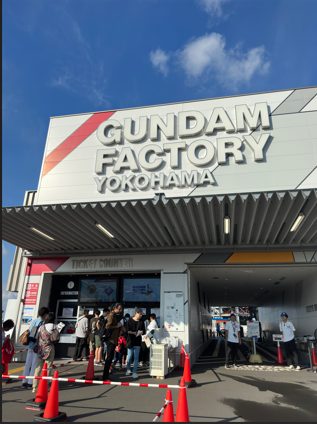
Located at Yamashita Pier with a view of Yokohama Port, “GUNDAM FACTORY YOKOHAMA” is an exhibition commemorating the 40th anniversary of the beloved TV anime “Mobile Suit Gundam.” The main highlight of this exhibition is an impressive 18-meter-tall life-size “Moving Gundam” that showcases various actions at 20-minute intervals and 45-minute intervals throughout the day. During the evening, it becomes a captivating sight as it gets beautifully illuminated, making it a prominent attraction in Yokohama.
After a wholesome day exploring Yokohama, head to Osanbashida park for a spectacular sunset view which is exactly opposite of Minato Mirai point. You can see the giant Ferris wheel and all the tall buildings with dark theme with a tinch of orangy vibes.Then return back to Tokyo and the day trip ends here.
Day 5:
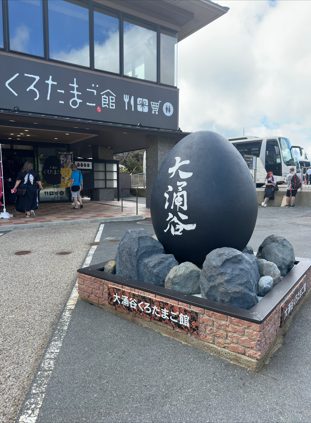
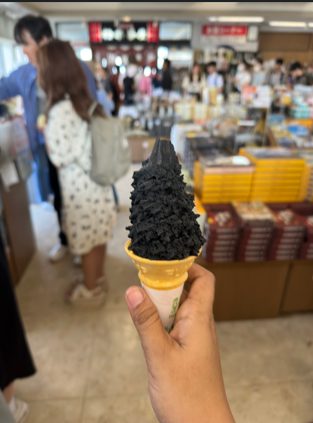
Day 5 comes with another amazing scenic adventure. This will be a one day trip to Hakone where you can try uniquely natural made black eggs. But for this you have to climb a rope way to the Owakundani the ‘volcanic wonderland’. This journey will offer you a lot stunning views and the most interesting part you can also witness Mount Fuiji from here on clear sky day. There is also a beautiful location of the shrine which is located on the bank of the river. There you can take a lot of beautiful pictures as the view is mesmerizing in its unique way. Well there a lot of other sight seeing like museum, black egg shop, which is possible by the pirate style boat that will cover all the locations.
Day 6: Travelling to osaka
Pre book your train ride from Tokyo to Osaka as it gives you a lot of facility, this Shinkansen is known as a bullet train and it covers 7 hours of journey into just 3 hours. This is a whole lot of fun adventure when visiting Japan. As this bullet trains originated here. This train ride costed me around 9000 INR, which is a bit expensive but was worth a while with high speed feels.
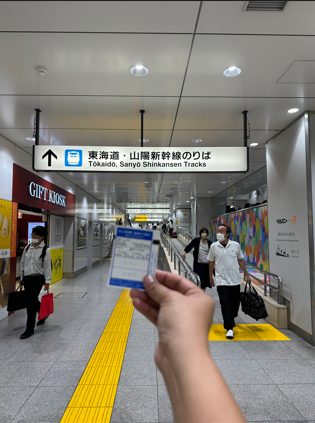
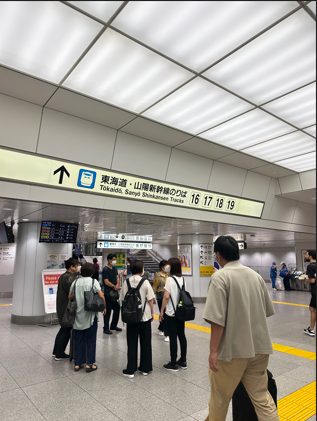
After reaching Osaka we have 5 days to explore this city but first take some rest and let the 4 days of Tokyo soothe your mind. After this we will go around for some excellent exploration.
Shinsekai
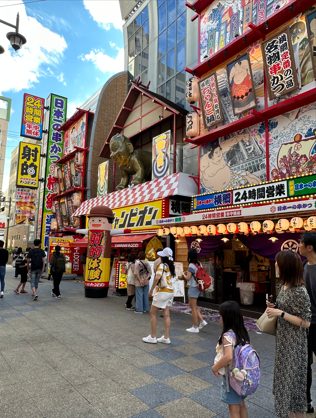
Shinsekai, an Osaka district with a pre-war development history, experienced a period of neglect in the decades that followed. At the heart of this district stands Tsutenkaku Tower, an iconic symbol that invokes nostalgia. Shinsekai is a vibrant area located to the west of Tennoji Park, known for its abundance of affordable shops and dining establishments, with the famous Tsutenkaku Tower as its centerpiece. Today, Tsutenkaku Tower is bustling with souvenir shops and amusements, offering two observation decks on the 4th and 5th floors that provide panoramic views of the city. Admission to the top deck is priced at 500 yen.
While strolling obviously you might crave some delish traditional dishes which this area happens to offer. Janjan Yokocho is a covered shopping arcade stretching from the southern end near Spa World to the central Shinsekai area. Presently, this arcade is home to a variety of affordable clothing stores, pinball parlors, souvenir shops, and a multitude of inexpensive dining options. Janjan Yokocho is especially famous for its kushikatsu eateries, where you can savor deep-fried skewers of meat and vegetables coated in breadcrumbs. Pairing this with a cold beer makes for a delightful way to immerse yourself in Shinsekai’s cultural experience.
Tennoji temple
Second stop of the day in Osaka would be at Tennoji temple, it located on east of Shinsekai. Nestled in the charming eastern neighborhood of Yanaka in Tokyo’s Taito ward, Tennoji Temple is a unique blend of ancient Buddhist traditions with a contemporary touch. Tennoji Temple, situated in Tokyo’s Yanaka district, is the oldest among the numerous temples that grace this area. Presently, Tennoji Temple stands on the periphery of Yanaka Cemetery, offering picturesque views of Nippori Station. Originally, Yanaka Cemetery was part of the temple grounds. The temple now finds itself encompassed by a modern, tastefully designed wall, which encloses its elegantly landscaped premises. At the heart of this tranquil setting lies a centuries-old bronze Buddha statue, serving as the focal point of the temple’s serene surroundings
Day 7: City tour Osaka
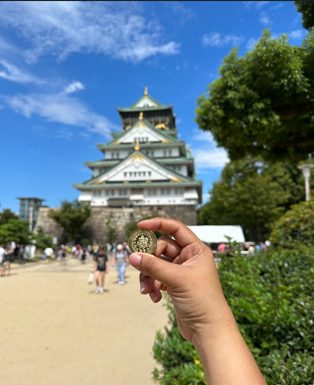
The second day in Osaka starts with visiting Osaka castle. The construction of Osaka Castle commenced in 1583, situated on the grounds once occupied by the Ishiyama Honganji Temple, which had been razed by Oda Nobunaga thirteen years prior. The interior of the castle tower has been completely modernized, including the addition of an elevator for enhanced accessibility
. Within the tower, visitors can explore an educational museum dedicated to the history of the castle and Toyotomi Hideyoshi. Surrounding the castle tower are secondary citadels, gates, turrets, remarkable stone fortifications, and moats.
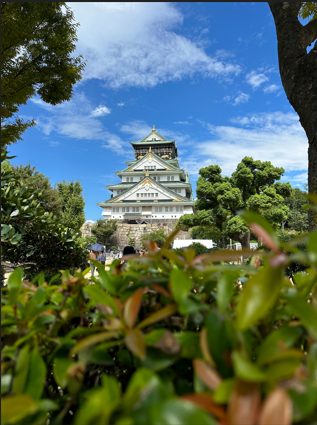
Sumiyoshi Taisha
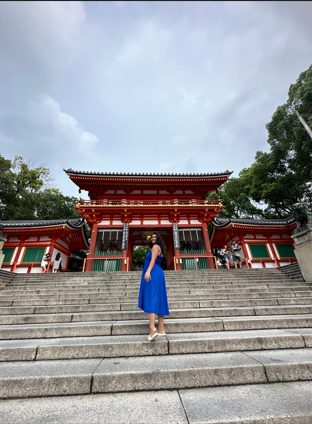 Sumiyoshi Taisha, also known as “Sumiyoshi Grand Shrine,” located in Osaka, stands as one of Japan’s ancient shrines, with its origins tracing back to the 3rd century, preceding the introduction of Buddhism. The shrine boasts a distinct architectural style called Sumiyoshi-zukuri, characterized by its independence from Asian mainland influences. This style is counted among the only three purely Japanese shrine architectural traditions, the other two being Shinmei-zukuri, found at the Ise Shrines, and Taisha-zukuri, exemplified by Izumo Taisha.
Sumiyoshi Taisha, also known as “Sumiyoshi Grand Shrine,” located in Osaka, stands as one of Japan’s ancient shrines, with its origins tracing back to the 3rd century, preceding the introduction of Buddhism. The shrine boasts a distinct architectural style called Sumiyoshi-zukuri, characterized by its independence from Asian mainland influences. This style is counted among the only three purely Japanese shrine architectural traditions, the other two being Shinmei-zukuri, found at the Ise Shrines, and Taisha-zukuri, exemplified by Izumo Taisha.
Shitennoji temple
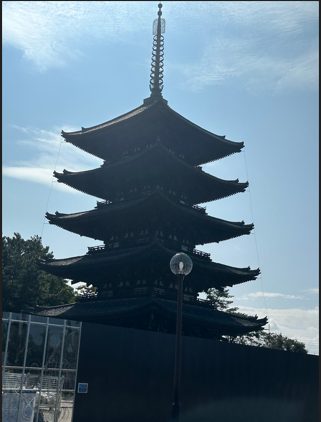 Shitennoji stands as one of Japan’s most ancient temples and holds the distinction of being the first temple ever constructed by the state. Its establishment dates back to the year 593 when it was founded by Prince Shotoku, a fervent advocate of introducing Buddhism to Japan. Despite enduring multiple fires that razed its structures over the centuries, Shitennoji has consistently undergone meticulous reconstruction efforts to faithfully preserve its original 6th-century design. Visitors can access the outer temple grounds without any entrance fees, but admission is required to enter the inner precinct, the Gokuraku-jodo Garden, and the treasure house, for which a fee is charged.
Shitennoji stands as one of Japan’s most ancient temples and holds the distinction of being the first temple ever constructed by the state. Its establishment dates back to the year 593 when it was founded by Prince Shotoku, a fervent advocate of introducing Buddhism to Japan. Despite enduring multiple fires that razed its structures over the centuries, Shitennoji has consistently undergone meticulous reconstruction efforts to faithfully preserve its original 6th-century design. Visitors can access the outer temple grounds without any entrance fees, but admission is required to enter the inner precinct, the Gokuraku-jodo Garden, and the treasure house, for which a fee is charged.
Dotonbori
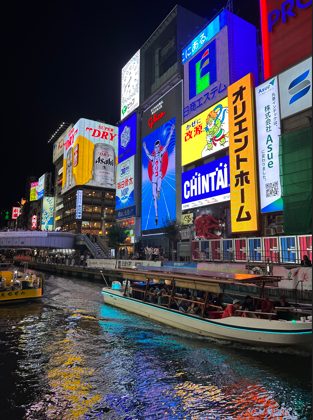 Dotonbori, situated alongside its eponymous canal, is a vibrant street nestled within Osaka’s Namba district, specifically in Chuo ward. It serves as a quintessential representation of Osaka’s bustling nightlife scene. This lively area dazzles with its neon lights, tantalizing street food, nostalgic atmosphere, nightclubs, shops, and bars. A well-known phrase linked to this street is “kuidaore,” which essentially implies indulging in extravagant spending on delectable food until going financially overboard. Dotonbori stands as one of the premier tourist attractions in Osaka. As night falls, the area transforms with vibrant neon signs illuminating both the canal and the streets, creating a dazzling spectacle.
Dotonbori, situated alongside its eponymous canal, is a vibrant street nestled within Osaka’s Namba district, specifically in Chuo ward. It serves as a quintessential representation of Osaka’s bustling nightlife scene. This lively area dazzles with its neon lights, tantalizing street food, nostalgic atmosphere, nightclubs, shops, and bars. A well-known phrase linked to this street is “kuidaore,” which essentially implies indulging in extravagant spending on delectable food until going financially overboard. Dotonbori stands as one of the premier tourist attractions in Osaka. As night falls, the area transforms with vibrant neon signs illuminating both the canal and the streets, creating a dazzling spectacle.
Day 8: Exploring Universal studio
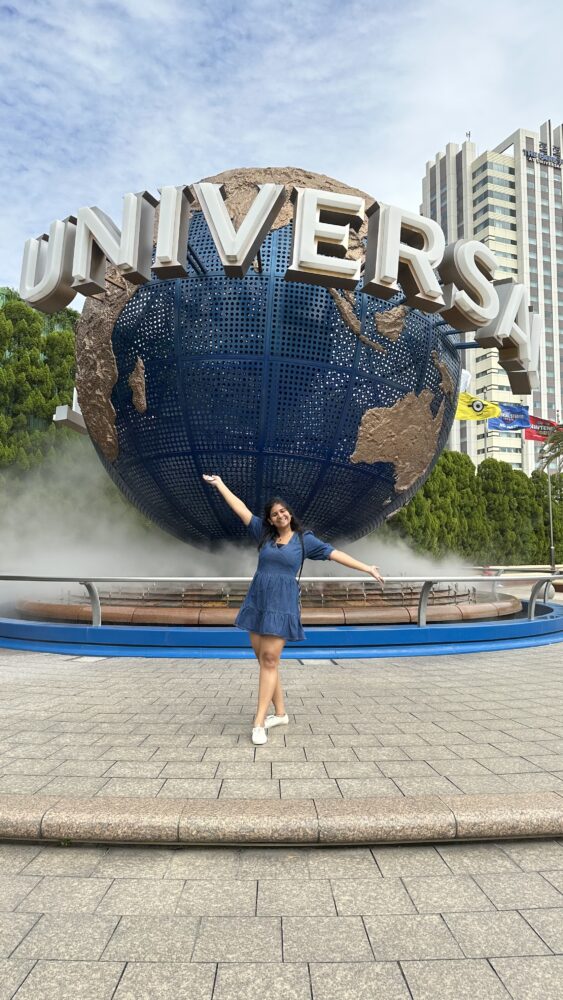
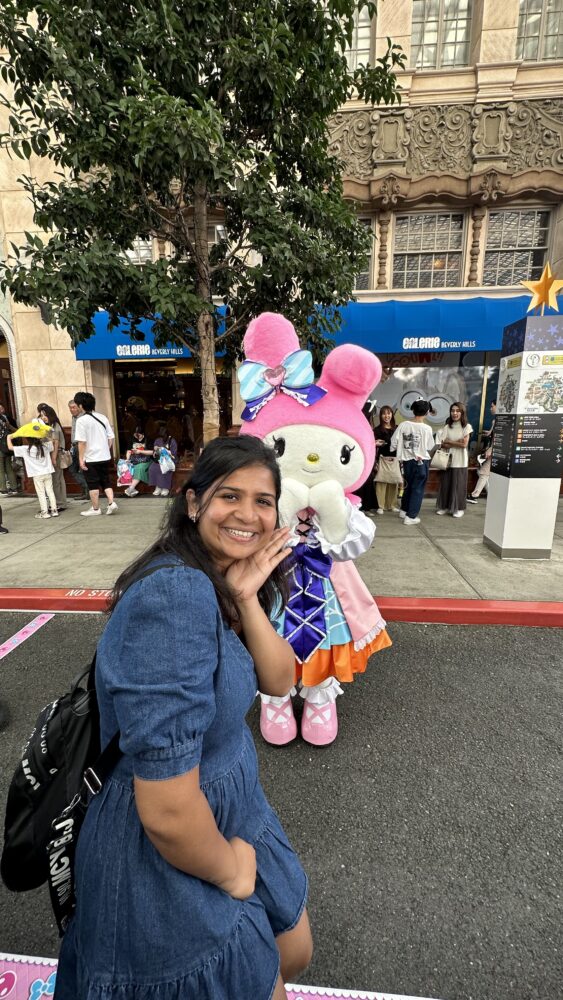
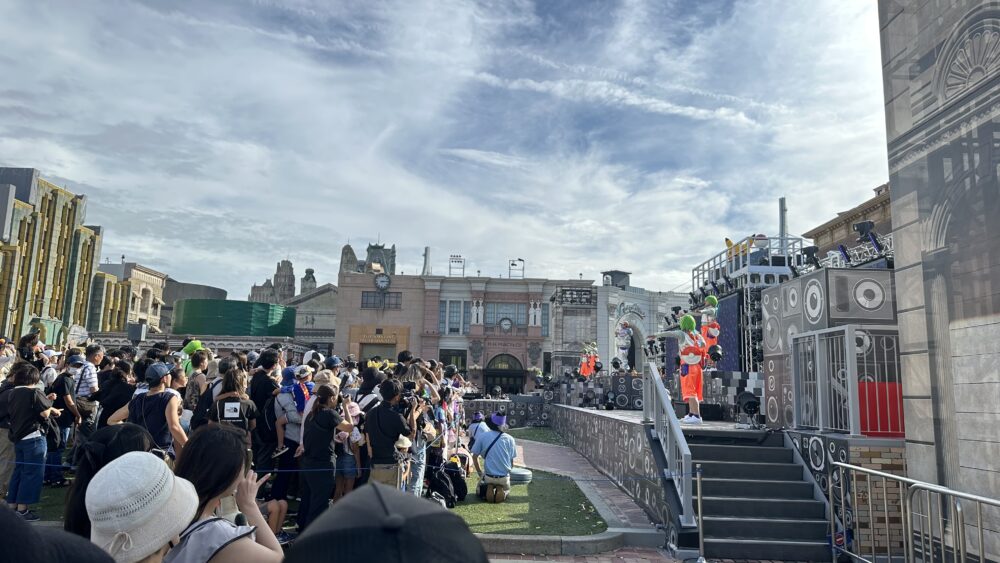
For numerous tourists in Japan, a visit to Osaka’s Universal Studios Japan is an absolute must. If you’re a fan of amusement parks or have children who are, then including Osaka’s Universal Studios Japan in your itinerary is highly recommended. The combination of Universal Studios’ enchantment and Japanese efficiency ensures it ranks among the most enjoyable amusement parks in the world. they also have a famous Nintendo world. However, it remains consistently crowded throughout the year, which underscores the importance of meticulous planning. To maximize your experience, it’s crucial to purchase tickets and Express Passes well in advance. Day 8 ends with the riding adventure.
Day 9: Osaka
Shinsaibashi
Shinsaibashi, located in Osaka, is a well-frequented shopping district with a rich historical legacy as a prominent regional hub for commerce. The district derives its name from the original 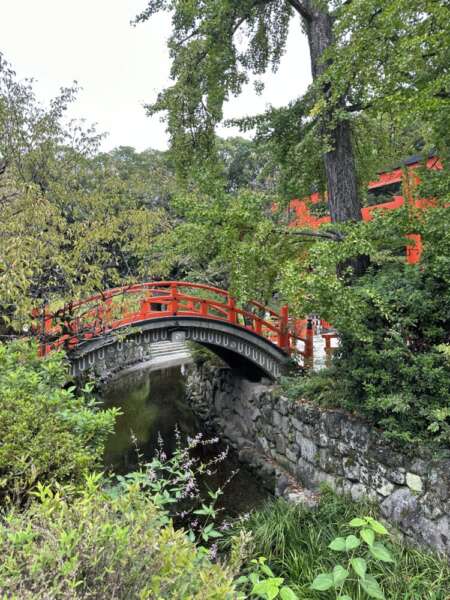 Shinsaibashi Bridge, constructed by Shinsai Okada back in 1622. This bridge spanned the Nagahorigawa canal and served as a beloved local landmark until 1964 when the canal was filled in, and the bridge was dismantled. Nonetheless, the name “Shinsaibashi” continues to endure, now closely linked with high-end fashion retailers and trendy brand merchandise.
Shinsaibashi Bridge, constructed by Shinsai Okada back in 1622. This bridge spanned the Nagahorigawa canal and served as a beloved local landmark until 1964 when the canal was filled in, and the bridge was dismantled. Nonetheless, the name “Shinsaibashi” continues to endure, now closely linked with high-end fashion retailers and trendy brand merchandise.
After this, savor the local dishes as there are a lot of local delicacies to try as Osaka is a hub for traditional Japanese cuisine.
10 Yen cheese coin
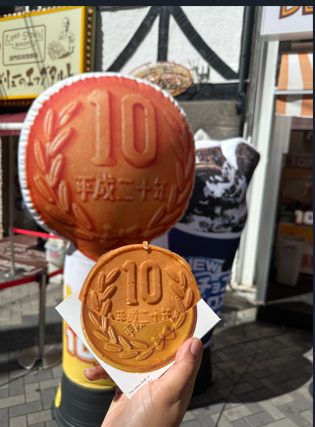
Indulge in a crispy pancake filled with an abundance of cheese, offering a delightful blend of textures. It cost around 500 Yen which is 335 Indian rupees.
Location: Dontonbori, Osaka
Takoyaki
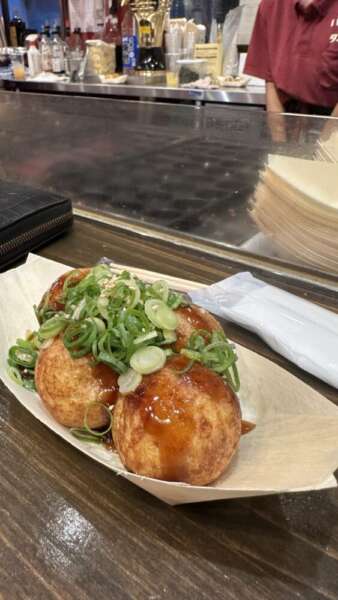 Dive into the world of Takoyaki which is crispy from outside and tender from inside, it is filled with octopus green onion and pickled ginger. It cost around 300-500 rs.
Dive into the world of Takoyaki which is crispy from outside and tender from inside, it is filled with octopus green onion and pickled ginger. It cost around 300-500 rs.
Location: Dontonbori, Osaka
Super long Guragura-bo
Capture the essence of Osaka with Guragura-bo, a tower of baby castella cakes. A sweet treat perfect for creating memories against the iconic Tsutenkaku tower as the view is very efficient. It cost around 300 Yen, which is around 200 in Indian rs.
Location: Kankando Shinsekai Janjan Yokocho Alley
Torikara
Savor the deep-fried goodness of Torikara which is a juicy chicken with veggies paired with fried potatoes and a variety of sauces.This cost around 500-900 Indian rs.
Location: Shinsekai Janjan Yokocho Alley.
Daifuku Mochi
Experience the chewy goodness of Daifuku Mochi which is filled with luscious strawberries. It is a perfect blend of softness and flavors. It cost around 350 Yen, which is 235 Indian rs.
Location: various shops in Dontonburi, Osaka.
Day 10: Trip to Nara
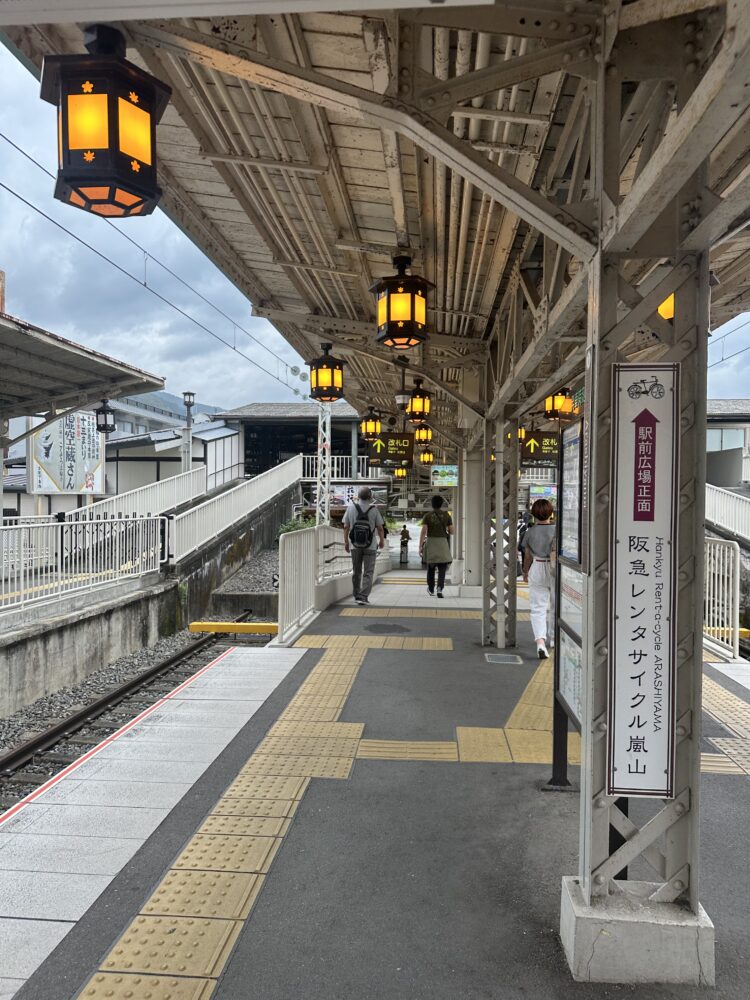
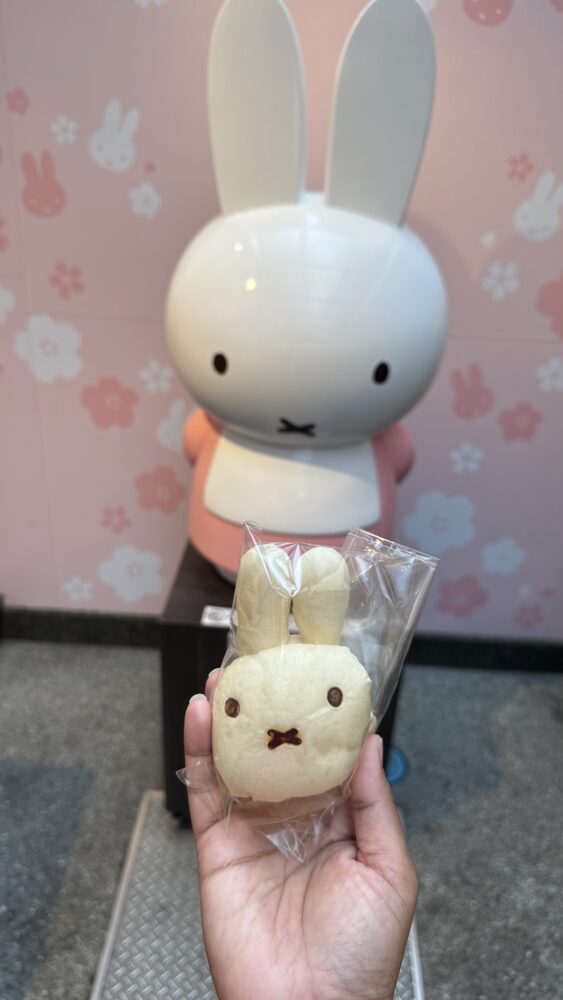
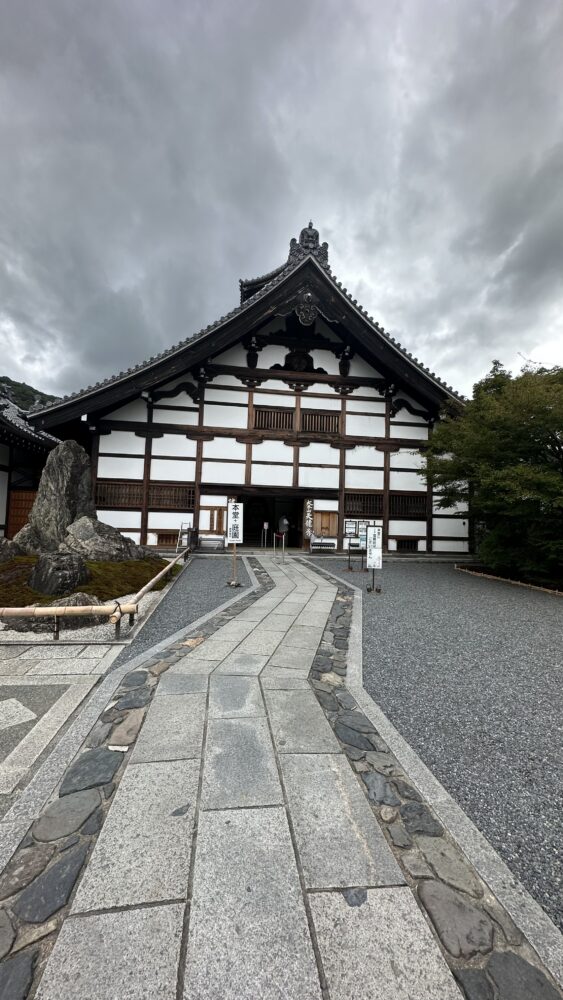
This is going to be a magical adventure to Nara where there are deer who bow to you and roam freely without any disturbance. Nara is home to 8 UNESCO heritage sites just located 40 minutes away from the Osaka city. Well besides Nara deer park deer there are a lot of touristy locations to cover like Kofukuji temple, Isuien garden, Todaji temple, Wakakusa and last location would be Kasuga Taisha temple. After exploring the locations go on the shopping spree at Higashimuki, you probably will find Japanese souvenirs. Take a lunch break at Mizuya Chaya and the must try here is their Udon. Last but not the least end the day with Nakatanidou a famous Mochi making shop. Head back to Osaka after this beautiful memorable day
Day 11: Osaka to Kyoto
Osaka and Kyoto enjoy excellent train connectivity through four different rail lines. The choice of the most suitable rail line depends on your departure location in Osaka and your intended destination in Kyoto. Key stations with strong connections include Shin-Osaka, Osaka Station, and Kyoto Station. Fortunately, no matter which route you select, the travel time is short, typically ranging from 5 to 15 minutes, and the quickest routes are included in the JR Pass.
Check into your room freshen up a bit and head straight to explore north and east of Kyoto. Start with..
Imamiya Jina Shrine
Imamiya Shrine, with its thousand-year-old history, is renowned for its association with prayers for robust health and recuperation from illnesses. Situated in the northwestern part of Kyoto, this Shinto shrine is well-known for hosting two significant festivals, the Yasurai Festival in April and the Imamiya Festival in May. It is also famous for its role in facilitating prayers for good health and for its mystical stone. Imamiya Shrine plays a deeply ingrained role in the lives of the local residents residing in its vicinity.
Philosophers Path
The Philosopher’s Path offers a delightful stone trail that winds through the northern section of Kyoto’s Higashiyama district. This picturesque path runs alongside a canal adorned with hundreds of cherry trees. Typically, in early April, these cherry blossoms burst into vibrant colors, making it one of the city’s most popular locations for hanami. Along the path, you’ll also find a variety of restaurants, cafes, and boutiques, along with several small temples and shrines just a short stroll away from the canal. Among these, the most notable is Honen-in, known for its striking entrance gate, which is particularly captivating during the autumn season.
Heian Jingu Shrine
Heian Shrine, also known as Heian Jingū, boasts a relatively brief history, having been established a little over a century ago in 1895. The entrance to the shrine is adorned with a massive torii gate, and in its vicinity, you can find a couple of museums. The shrine’s actual premises are expansive, featuring a large open courtyard at its heart. The primary structures of the shrine partially replicate the original Imperial Palace from the Heian Period. Positioned behind these main buildings lies an appealing, paid garden featuring a diverse array of plants, ponds, and structures.
Nanzenji temple
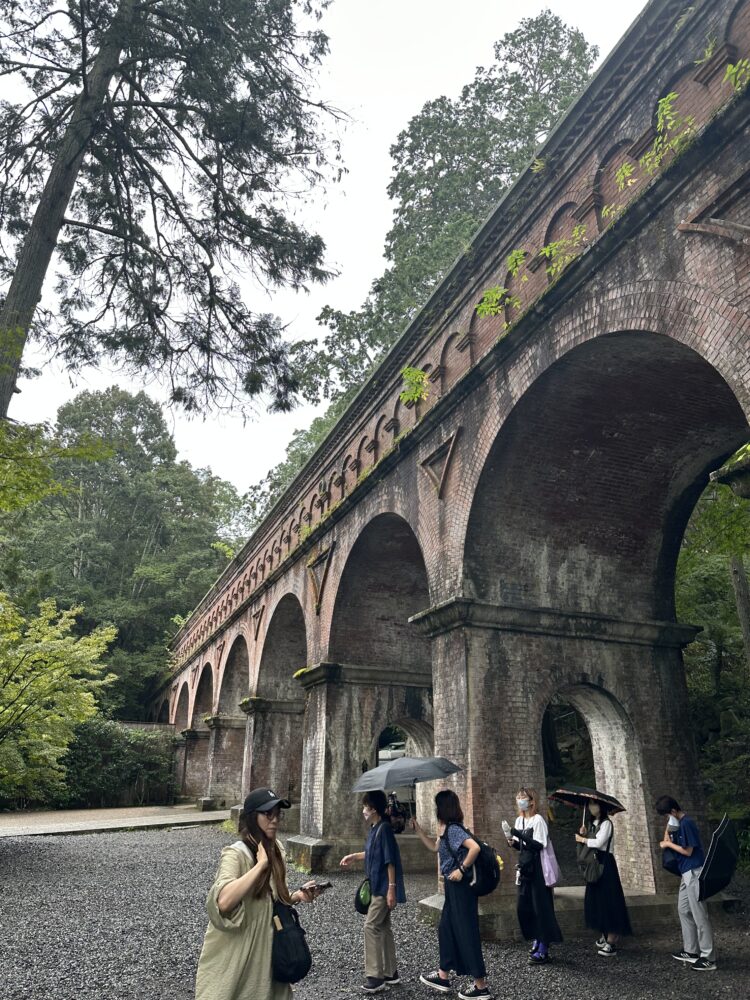
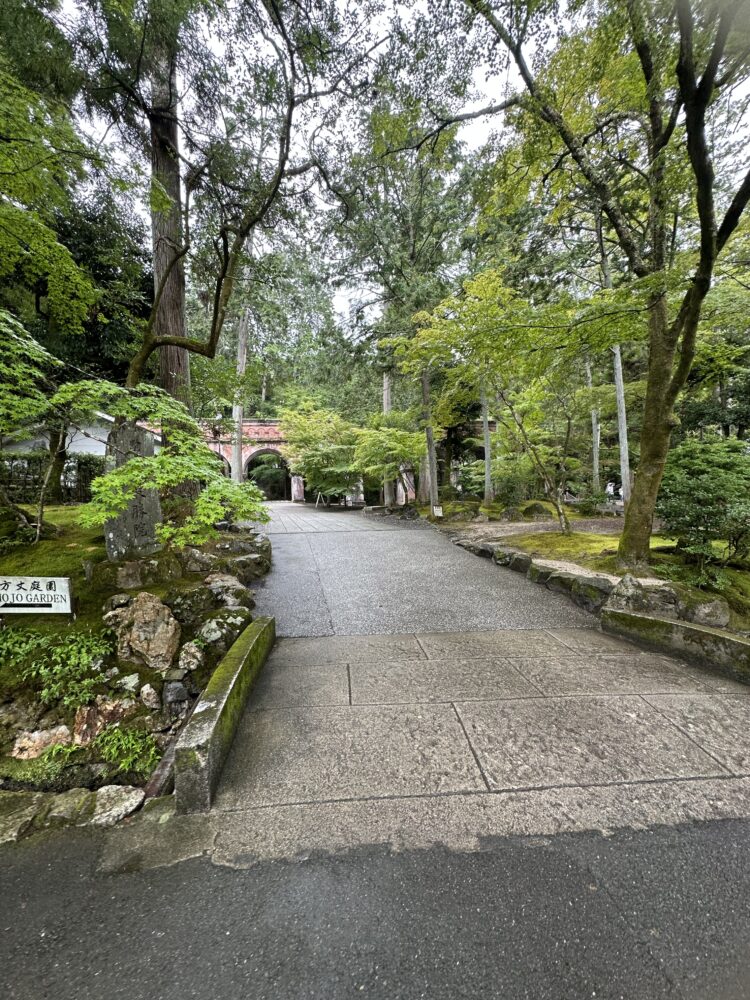
Situated at the foothills of Kyoto’s lush Higashiyama mountains, Nanzenji Temple occupies expansive grounds and stands as one of Japan’s prominent Zen temples. As the principal temple of a school within the Rinzai sect of Japanese Zen Buddhism, Nanzenji encompasses numerous sub temples, augmenting the already extensive complex of temple structures. While the central temple grounds of Nanzenji are freely accessible to the public, there are distinct charges for admission to temple buildings and sub temples.
Keage Incline
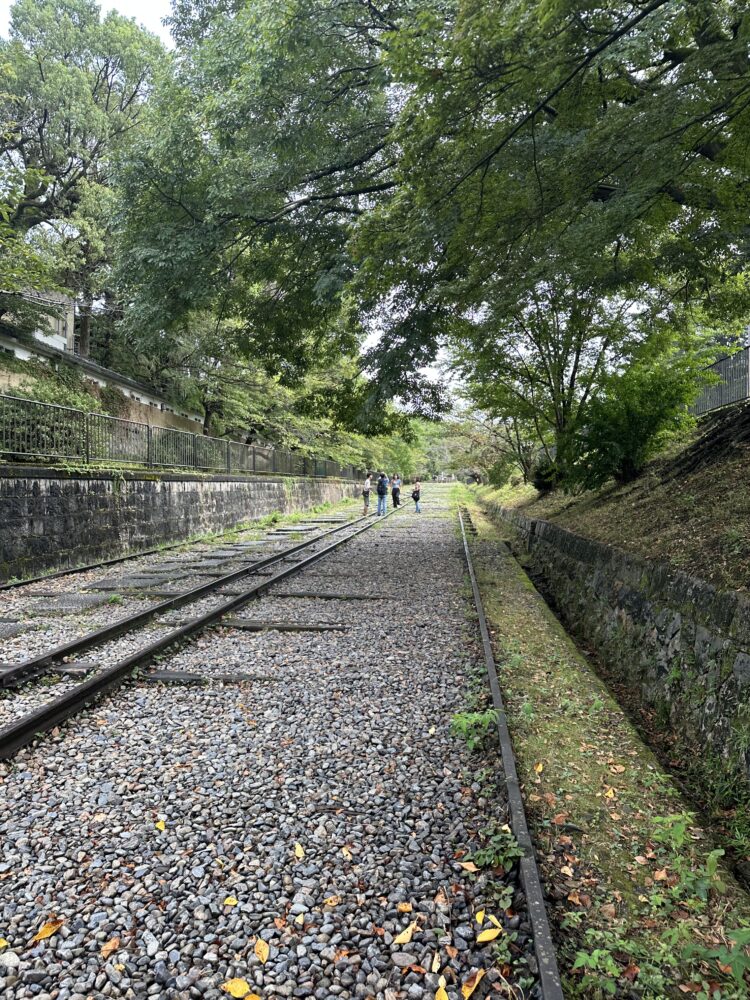
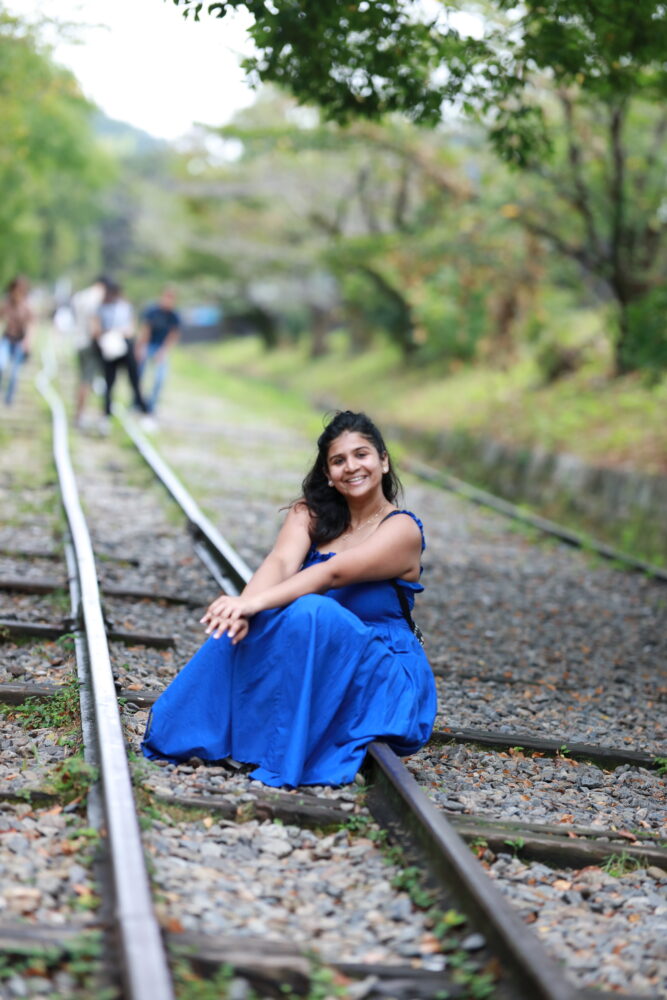
The Keage Incline is a railway incline that stretches from the Keage Boat Reservoir (upstream) to the Nanzenji Boat Reservoir (downstream). Spanning a total distance of 582 meters, this incline held the distinction of being the world’s longest at the time of its construction. Its primary function was to facilitate the transport of boats along an elevation difference of around 36 meters without requiring the offloading of cargo. The railway tracks of this incline have been preserved in their original state, allowing visitors to stroll along them. It’s a well-liked tourist attraction, particularly during the spring season when cherry blossoms adorn both sides of the railway in splendid bloom.
Kyoto Tower
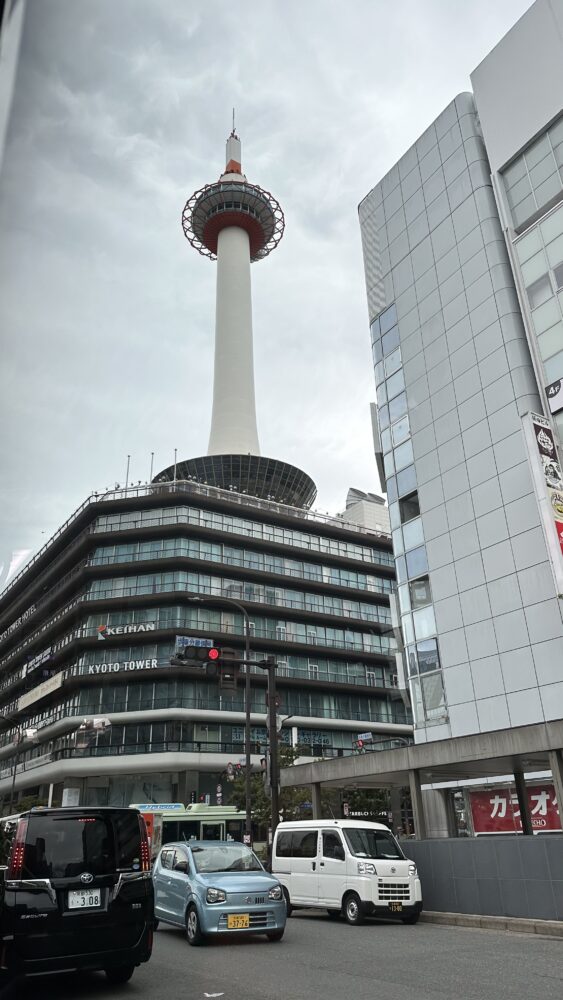
Situated directly across from Kyoto Station and rising to a height of 131 meters, Kyoto Tower holds the distinction of being Kyoto’s tallest structure, offering a unique modern landmark in a city renowned for its ancient temples and shrines. This tower was constructed in 1964, coinciding with the launch of the Shinkansen and the Tokyo Olympics. At an elevation of 100 meters above ground, there is an observation deck that provides a panoramic 360-degree vista of Kyoto, extending as far as Osaka on clear days. Kyoto Tower is perched atop a standard commercial building housing souvenir shops, restaurants, and a hotel.
Sky Garden
The sky way tunnel is a gateway to breathtaking city views. The sky garden on the 15th floor unveils a panoramic canvas of Kyoto, with the illuminated Kyoto Tower adding a magical touch to your evenings. The skyway tunnels leads you to the restaurant level on the 11th floor of the west wing. As you walk you will come across the Grand stairway which is adorned with 15000 LED’s offering mesmerizing light show in the evening. It is not just a show, there are dance of lights that leaves you spell bounded.
Day 12: Exploring south and far west Kyoto
Arashiyama
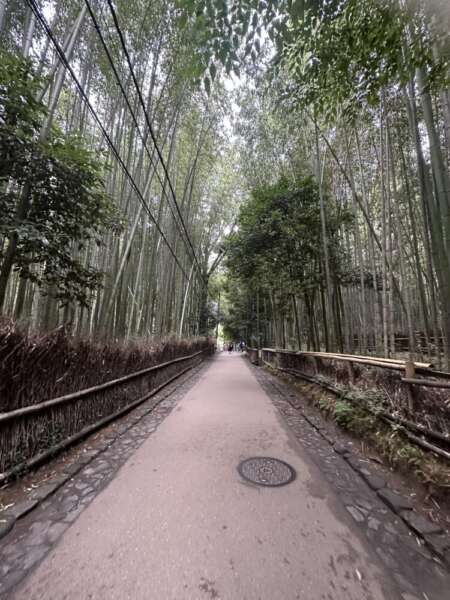 A visit to the Arashiyama Bamboo Forest is unquestionably a must-do experience. Populated by numerous bamboo trees that rise gracefully and erect, this location exudes an entirely distinct atmosphere. These majestic, verdant bamboo stalks form a natural canopy, casting cooling shadows and producing gentle, rustling melodies when swayed by the breeze. There are a lot of other things to do you can spend half of the day here by strolling around katsura river , exploring mesuems, Okochi sanso garden and a lot more temples and ponds. Also have a lunch at the local cafe named as miffy bakery, there bunny shaped sandwiches are to die for.
A visit to the Arashiyama Bamboo Forest is unquestionably a must-do experience. Populated by numerous bamboo trees that rise gracefully and erect, this location exudes an entirely distinct atmosphere. These majestic, verdant bamboo stalks form a natural canopy, casting cooling shadows and producing gentle, rustling melodies when swayed by the breeze. There are a lot of other things to do you can spend half of the day here by strolling around katsura river , exploring mesuems, Okochi sanso garden and a lot more temples and ponds. Also have a lunch at the local cafe named as miffy bakery, there bunny shaped sandwiches are to die for.
Fushimi Inari
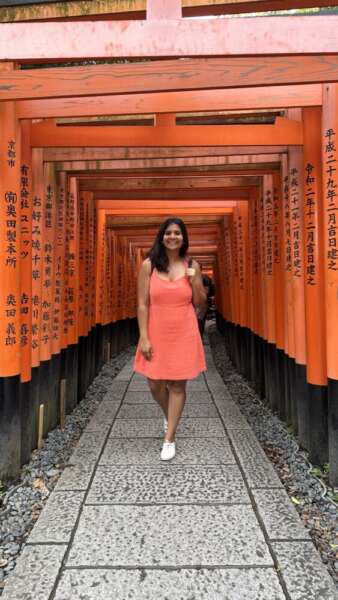 After spending half a day in Arashiyama, head to Fushimi Inari, holds great significance as a Shinto shrine located in the southern region of Kyoto. It is renowned for its extensive assembly of vermilion torii gates, which line the pathways behind its central structures. These paths wind their way into the serene forested expanse of Mount Inari, a sacred mountain with an elevation of 233 meters that is an integral part of the shrine’s grounds. Fushimi Inari Shrine holds a preeminent position among thousands of shrines devoted to Inari, the Shinto deity associated with rice.
After spending half a day in Arashiyama, head to Fushimi Inari, holds great significance as a Shinto shrine located in the southern region of Kyoto. It is renowned for its extensive assembly of vermilion torii gates, which line the pathways behind its central structures. These paths wind their way into the serene forested expanse of Mount Inari, a sacred mountain with an elevation of 233 meters that is an integral part of the shrine’s grounds. Fushimi Inari Shrine holds a preeminent position among thousands of shrines devoted to Inari, the Shinto deity associated with rice.
Nishiki market
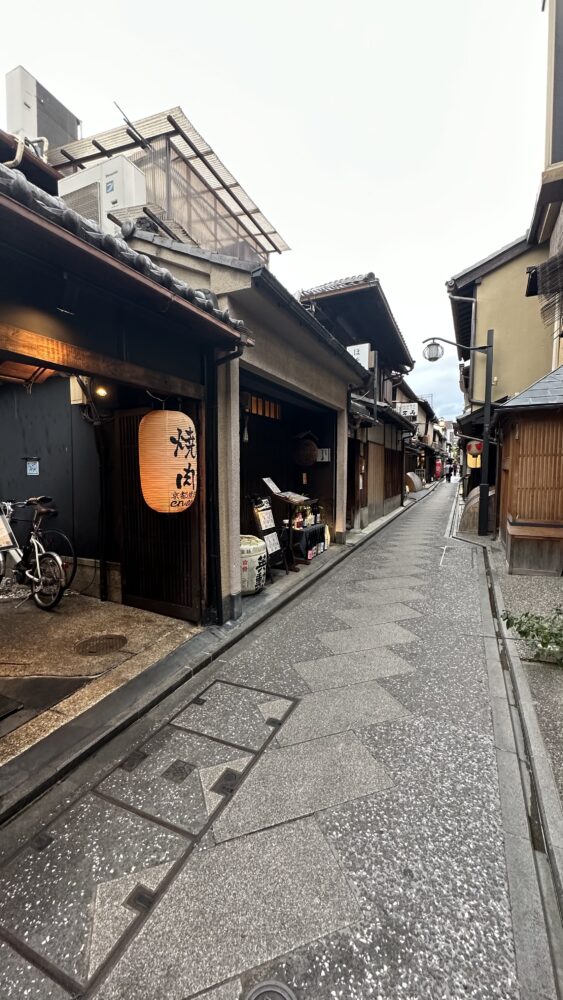
Nishiki Market is a slender, five-block-long thoroughfare brimming with over a hundred shops and eateries. Recognized as “Kyoto’s Kitchen,” this bustling marketplace is dedicated to everything culinary, featuring an array of offerings including fresh seafood, fruits and vegetables, kitchenware, and knives. It serves as an excellent location to discover seasonal delicacies and Kyoto’s distinctive specialties, such as traditional Japanese sweets, pickled items, dried seafood, and sushi.
Local delicacies
Kyoto is renowned for its signature cuisine: Kaiseki. These multi-course meals include sashimi, grilled, fried, and simmered dishes, soup, rice, and dessert, each served separately. The cuisine emphasizes seasonal ingredients and meticulous food presentation, even down to the choice of serving vessels.
Nishin soba is a dish featuring sweetly simmered herring served on a bed of hot soba noodles. It gained popularity in Kyoto due to the excellent preservation qualities of herring.
Kyoto is also known for its beloved sweet treat, kuzukiri. Kuzukiri is crafted from kudzu root powder, which is dissolved in water, molded, and then solidified before being finely sliced into noodle-like strands.
There are a lot more and feel free to explore more of it
Day 13: Last day in Kyoto
Kimono Rental


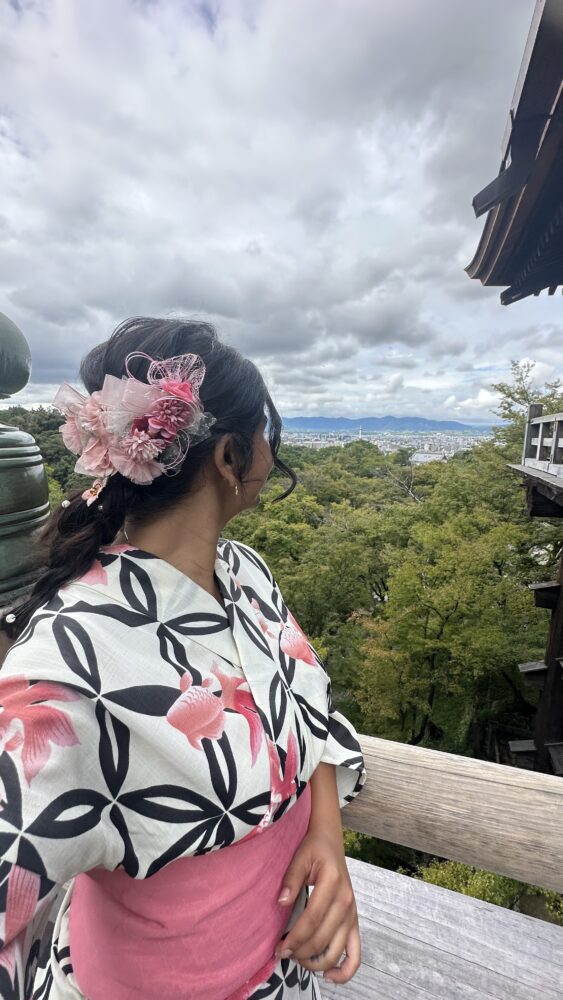
From Ookini Kimono you can rent stunning kimono starting from just 3000 yen and that includes a beautiful hairstyle at additional1000 yen. With a range of options featuring various patterns and colors, you can elevate your experience with premium choices priced between 4000-5000 yen. The shops opens at 8 in the morning and closes around 6 in the evening so return all the rentals around 5-5:30 which gives plenty of time spend a day in these kimono.
Ninenzaka
Ninenzaka is adorned with an array of establishments, encompassing souvenir shops, vendors offering diverse Japanese goods, confectioneries, and dining venues. Interestingly, the neighborhood also has historical significance, as the renowned painter and poet of the Taisho era, Yumeji Takehisa, resided here for approximately two years, beginning in 1917. A commemorative stone monument marks the location of his former residence.
Heritage Starbucks in Kyoto
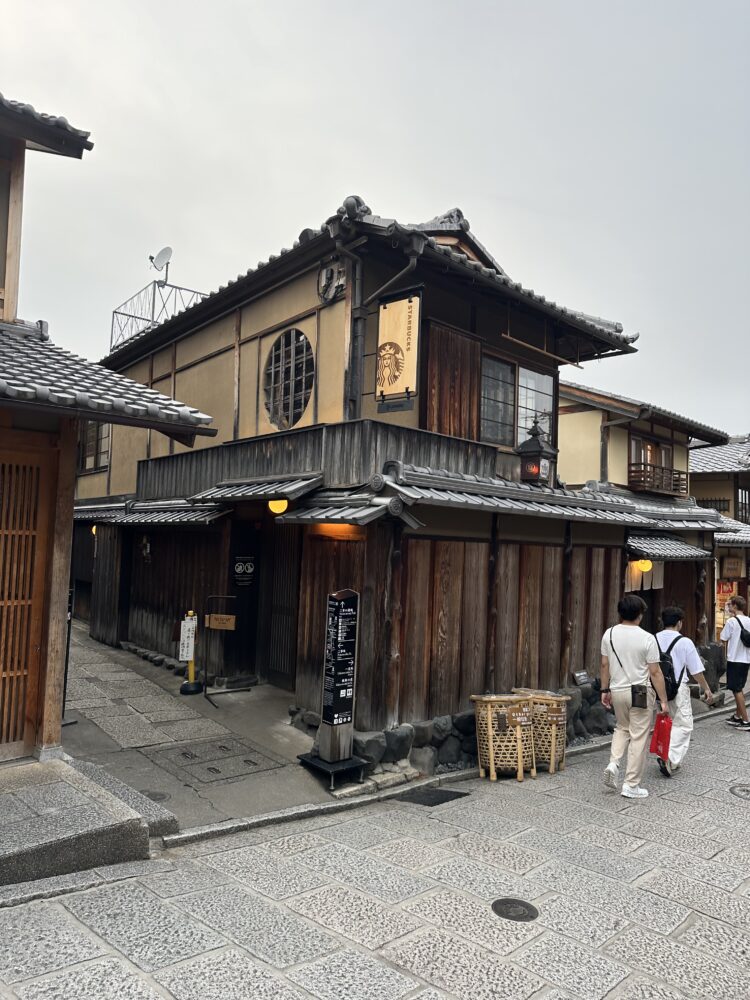
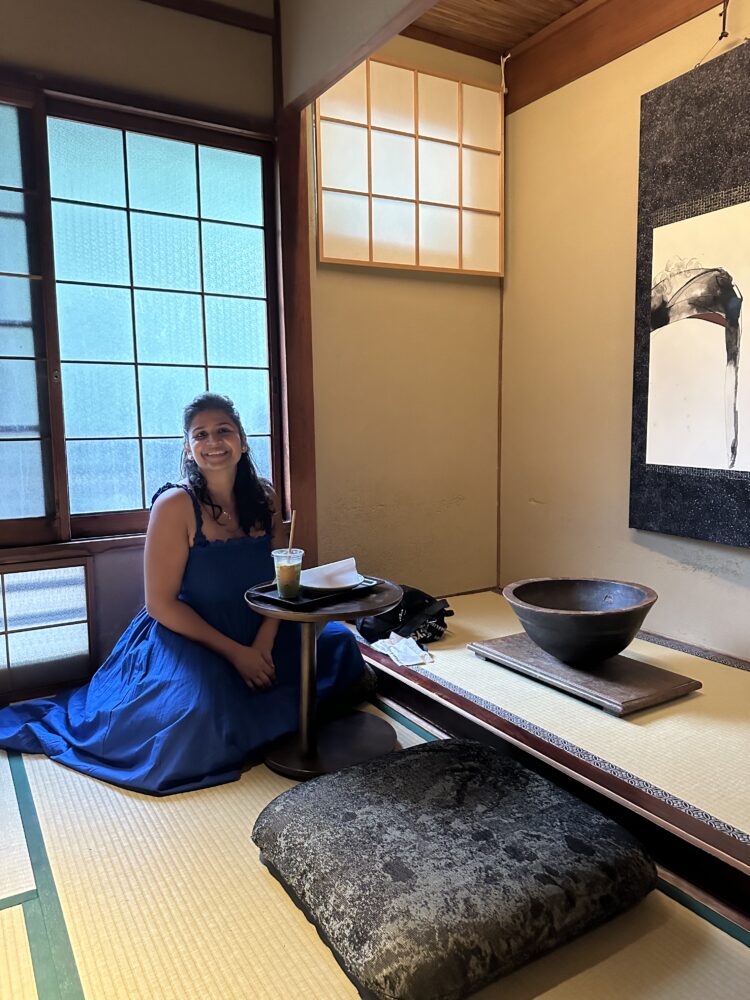
This Starbucks coffee in Kyoto Ninenzaka Yasaka Chaya, Japan is a fusion of global coffee vibes and local history that opened its doors in 2017. Imagine a traditional Japanese machiya, a wooden house transformed into a coffee house. Every corner of this shop whispers Kyoto’s culture.
Sannenzaka
Spanning approximately 100 meters, Sannenzaka is slightly steeper in comparison to Ninenzaka. When exploring this charming district, you’ll find an abundance of restaurants, making it an ideal destination for a visit during lunchtime. To access Sannenzaka and the traditional buildings housing sweets and craft shops, simply ascend the stairs located at the southern end of Ninenzaka within Kyoto’s historic old town. Sannen-zaka Marun is a delightful place to discover visually appealing sweets that truly embody the essence of Kyoto and make ideal souvenirs.
Gion
Gion stands as Kyoto’s most renowned geisha enclave, situated along Shijo Avenue, spanning from Yasaka Shrine in the east to the Kamo River in the west. This district is teeming with establishments, encompassing shops, eateries, and ochaya (teahouses), where geiko (Kyoto’s term for geisha) and maiko (geiko apprentices) provide entertainment. Gion captivates tourists with its remarkable cluster of traditional wooden machiya merchant houses.
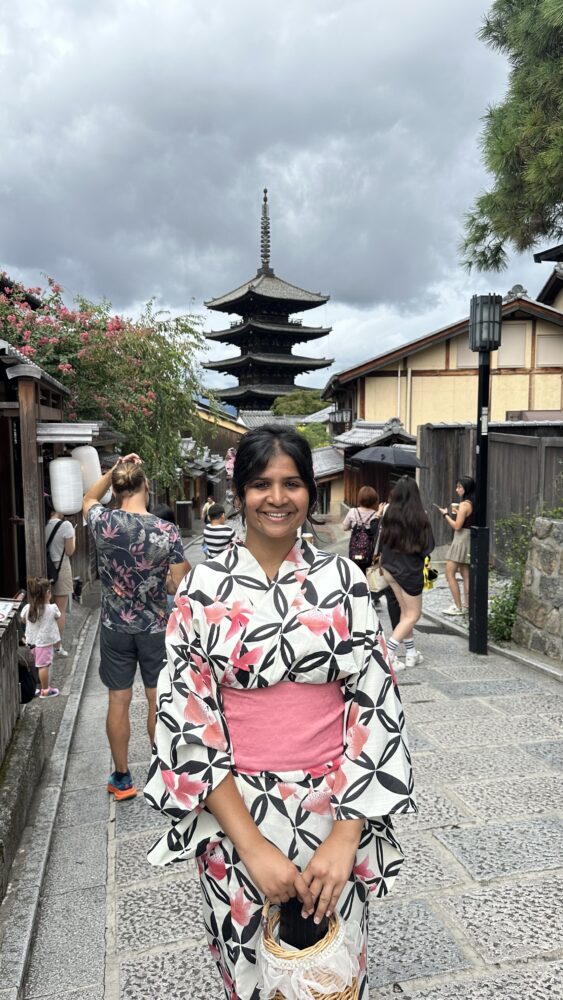
Kiyomizudera
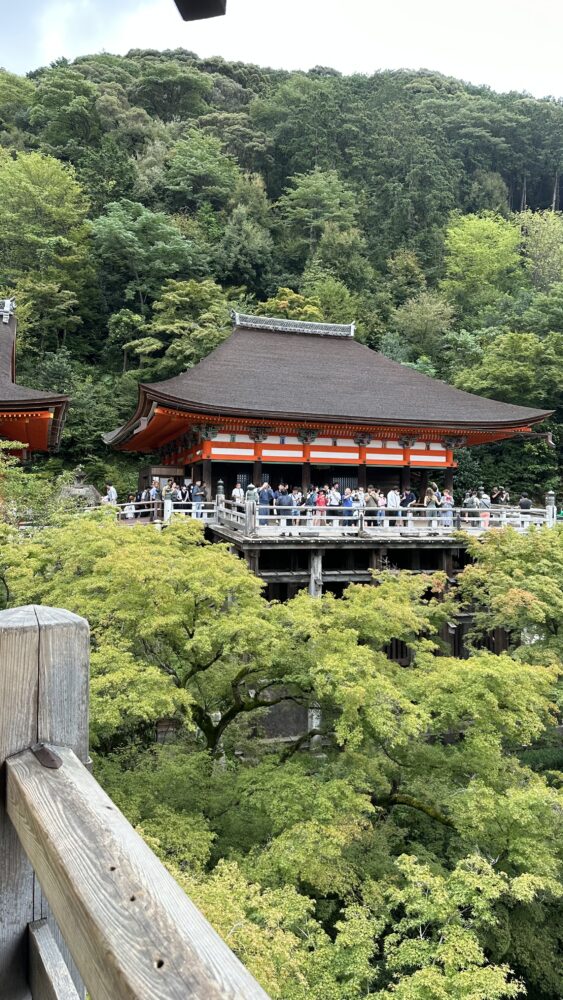
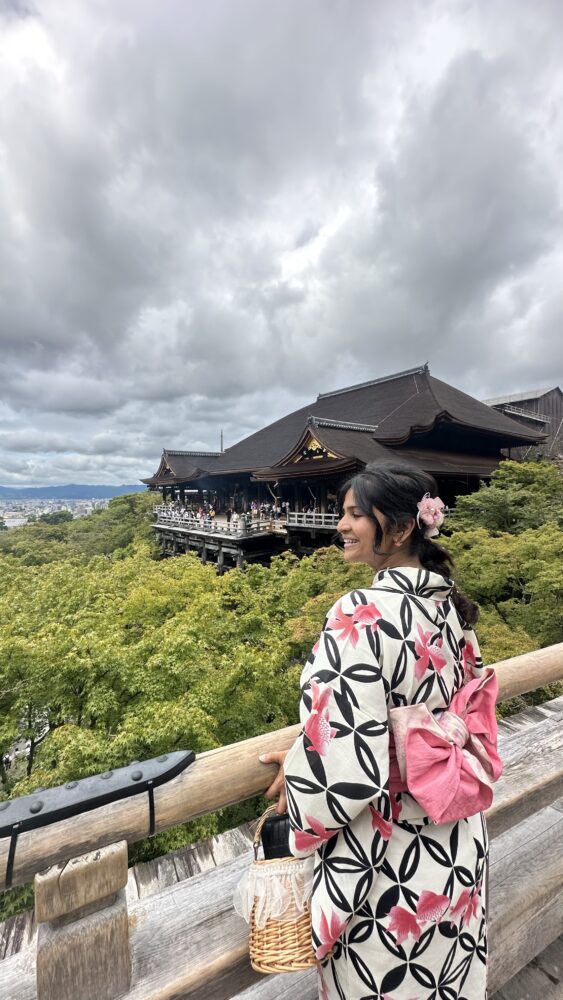
Kiyomizudera stands as one of Japan’s most revered temples, with its origins dating back to 780 when it was established on the grounds of the Ottawa Waterfall in the lush hills east of Kyoto. The temple takes its name from the pristine water of this waterfall. One of Japan’s oldest Buddhist schools, Kiyomizudera later formed its own Kita Hosso sect in 1965. In recognition of its cultural significance, the temple earned a place on the UNESCO World Heritage Sites list in 1994.
Well the trip came to an end, spend the last night in Japan and then catch a flight the next day to your hometown. Make sure to take as many memories with you. Well all this can be done in 2 weeks of time but if you feel like going slow and want to give personal time to your exploration with peace then I’ll be sharing my itinerary with all the off beat and famous places covered in just 2 weeks. Though Hiroshima, Beppu and other few places are not covered in this series but hoping to do it soon.
Day 14: Back to India
